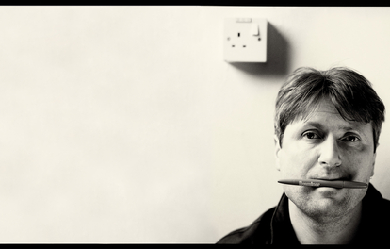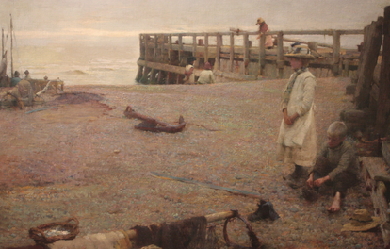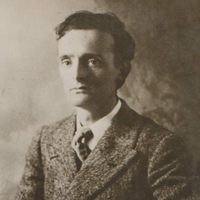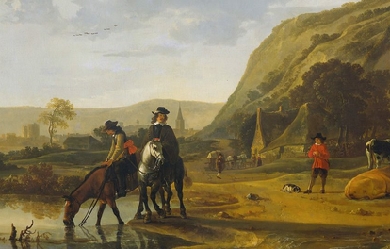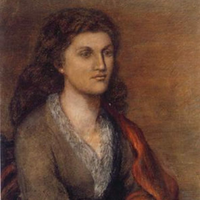
Info
Young man at his window
Gustave Caillebotte
1875
Private Collection
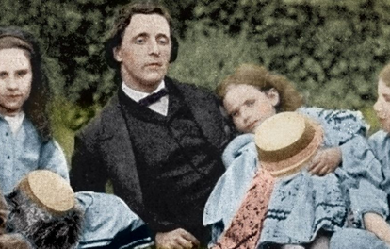
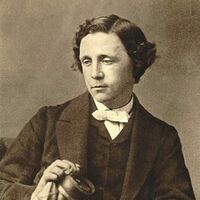
Charles Lutwidge Dodgson (27 January 1832 – 14 January 1898), better known by the pseudonym Lewis Carroll, was an English author, mathematician, logician, Anglican deacon and photographer. His most famous writings are Alice's Adventures in Wonderland and its sequel Through the Looking-Glass, as well as the poems "The Hunting of the Snark" and "Jabberwocky", all examples of the genre of literary nonsense. He is noted for his facility at word play, logic, and fantasy, and there are societies in many parts of the world (including the United Kingdom, Japan, the United States, and New Zealand) dedicated to the enjoyment and promotion of his works and the investigation of his life. Antecedents Dodgson's family was predominantly northern English, with Irish connections. Conservative and High Church Anglican, most of Dodgson's ancestors were army officers or Church of England clergy. His great-grandfather, also named Charles Dodgson, had risen through the ranks of the church to become the Bishop of Elphin. His grandfather, another Charles, had been an army captain, killed in action in Ireland in 1803 when his two sons were hardly more than babies. His mother's name was Frances Jane Lutwidge. The elder of these sons – yet another Charles Dodgson – was Carroll's father. He reverted to the other family tradition and took holy orders. He went to Westminster School, and then to Christ Church, Oxford. He was mathematically gifted and won a double first degree, which could have been the prelude to a brilliant academic career. Instead he married his first cousin in 1827 and became a country parson. Dodgson was born in the little parsonage of Daresbury in Cheshire near the towns of Warrington and Runcorn, the eldest boy but already the third child of the four-and-a-half-year-old marriage. Eight more children were to follow. When Charles was 11, his father was given the living of Croft-on-Tees in North Yorkshire, and the whole family moved to the spacious rectory. This remained their home for the next twenty-five years. Young Charles' father was an active and highly conservative cleric of the Church of England who later became the Archdeacon of Richmond and involved himself, sometimes influentially, in the intense religious disputes that were dividing the church. He was High Church, inclining to Anglo-Catholicism, an admirer of John Henry Newman and the Tractarian movement, and did his best to instill such views in his children. Young Charles was to develop an ambiguous relationship with his father's values and with the Church of England as a whole. Education Home life During his early youth, Dodgson was educated at home. His "reading lists" preserved in the family archives testify to a precocious intellect: at the age of seven the child was reading The Pilgrim's Progress. He also suffered from a stammer – a condition shared by most of his siblings – that often influenced his social life throughout his years. At age twelve he was sent to Richmond Grammar School (now part of Richmond School) at nearby Richmond. Rugby In 1846, young Dodgson moved on to Rugby School, where he was evidently less happy, for as he wrote some years after leaving the place: I cannot say ... that any earthly considerations would induce me to go through my three years again ... I can honestly say that if I could have been ... secure from annoyance at night, the hardships of the daily life would have been comparative trifles to bear. Scholastically, though, he excelled with apparent ease. "I have not had a more promising boy at his age since I came to Rugby", observed R.B. Mayor, then Mathematics master. Oxford He left Rugby at the end of 1849 and matriculated at Oxford in May 1850 as a member of his father's old college, Christ Church. After waiting for rooms in college to become available, he went into residence in January 1851. He had been at Oxford only two days when he received a summons home. His mother had died of "inflammation of the brain" – perhaps meningitis or a stroke – at the age of forty-seven. His early academic career veered between high promise and irresistible distraction. He did not always work hard, but was exceptionally gifted and achievement came easily to him. In 1852 he obtained first-class honours in Mathematics Moderations, and was shortly thereafter nominated to a Studentship by his father's old friend, Canon Edward Pusey. In 1854 he obtained first-class honours in the Final Honours School of Mathematics, graduating Bachelor of Arts. He remained at Christ Church studying and teaching, but the next year he failed an important scholarship through his self-confessed inability to apply himself to study. Even so, his talent as a mathematician won him the Christ Church Mathematical Lectureship in 1855, which he continued to hold for the next twenty-six years. Despite early unhappiness, Dodgson was to remain at Christ Church, in various capacities, until his death. Character and appearance Health challenges The young adult Charles Dodgson was about six feet tall, slender, and had curling brown hair and blue or grey eyes (depending on the account). He was described in later life as somewhat asymmetrical, and as carrying himself rather stiffly and awkwardly, though this may be on account of a knee injury sustained in middle age. As a very young child, he suffered a fever that left him deaf in one ear. At the age of seventeen, he suffered a severe attack of whooping cough, which was probably responsible for his chronically weak chest in later life. Another defect he carried into adulthood was what he referred to as his "hesitation", a stammer he acquired in early childhood and which plagued him throughout his life. The stammer has always been a potent part of the conceptions of Dodgson; it is part of the belief that he stammered only in adult company and was free and fluent with children, but there is no evidence to support this idea. Many children of his acquaintance remembered the stammer while many adults failed to notice it. Dodgson himself seems to have been far more acutely aware of it than most people he met; it is said he caricatured himself as the Dodo in Alice's Adventures in Wonderland, referring to his difficulty in pronouncing his last name, but this is one of the many "facts" often-repeated, for which no firsthand evidence remains. He did indeed refer to himself as the dodo, but that this was a reference to his stammer is simply speculation. Although Dodgson's stammer troubled him, it was never so debilitating that it prevented him from applying his other personal qualities to do well in society. At a time when people commonly devised their own amusements and when singing and recitation were required social skills, the young Dodgson was well-equipped to be an engaging entertainer. He reportedly could sing tolerably well and was not afraid to do so before an audience. He was adept at mimicry and storytelling, and was reputedly quite good at charades. Social connections In the interim between his early published writing and the success of the Alice books, Dodgson began to move in the Pre-Raphaelite social circle. He first met John Ruskin in 1857 and became friendly with him. He developed a close relationship with Dante Gabriel Rossetti and his family, and also knew William Holman Hunt, John Everett Millais, and Arthur Hughes, among other artists. He also knew the fairy-tale author George MacDonald well – it was the enthusiastic reception of Alice by the young MacDonald children that convinced him to submit the work for publication. Politics, religion and philosophy In broad terms, Dodgson has traditionally been regarded as politically, religiously, and personally conservative. Martin Gardner labels Dodgson as a Tory who was "awed by lords and inclined to be snobbish towards inferiors." The Revd W. Tuckwell, in his Reminiscences of Oxford (1900), regarded him as "austere, shy, precise, absorbed in mathematical reverie, watchfully tenacious of his dignity, stiffly conservative in political, theological, social theory, his life mapped out in squares like Alice's landscape." However, Dodgson also expressed interest in philosophies and religions that seem at odds with this assessment. For example, he was a founding member of the Society for Psychical Research. It has been argued by the proponents of the 'Carroll Myth' that these factors require a reconsideration of Gardner's diagnosis, and that perhaps, Dodgson's true outlook was more complex than previously believed (see 'the Carroll Myth' below). Dodgson wrote some studies of various philosophical arguments. In 1895, he developed a philosophical regressus-argument on deductive reasoning in his article "What the Tortoise Said to Achilles", which appeared in one of the early volumes of the philosophical journal Mind. The article was reprinted in the same journal a hundred years later, in 1995, with a subsequent article by Simon Blackburn titled Practical Tortoise Raising. Artistic activities Literature From a young age, Dodgson wrote poetry and short stories, both contributing heavily to the family magazine Mischmasch and later sending them to various magazines, enjoying moderate success. Between 1854 and 1856, his work appeared in the national publications, The Comic Times and The Train, as well as smaller magazines like the Whitby Gazette and the Oxford Critic. Most of this output was humorous, sometimes satirical, but his standards and ambitions were exacting. "I do not think I have yet written anything worthy of real publication (in which I do not include the Whitby Gazette or the Oxonian Advertiser), but I do not despair of doing so some day," he wrote in July 1855. Sometime after 1850, he did write puppet plays for his siblings' entertainment, of which one has survived, La Guida di Bragia. In 1856 he published his first piece of work under the name that would make him famous. A romantic poem called "Solitude" appeared in The Train under the authorship of "Lewis Carroll." This pseudonym was a play on his real name; Lewis was the anglicised form of Ludovicus, which was the Latin for Lutwidge, and Carroll an Irish surname similar to the Latin name Carolus, from which the name Charles comes. Alice In the same year, 1856, a new Dean, Henry Liddell, arrived at Christ Church, bringing with him his young family, all of whom would figure largely in Dodgson's life and, over the following years, greatly influence his writing career. Dodgson became close friends with Liddell's wife, Lorina, and their children, particularly the three sisters: Lorina, Edith and Alice Liddell. He was for many years widely assumed to have derived his own "Alice" from Alice Liddell. This was given some apparent substance by the fact the acrostic poem at the end of Through the Looking Glass spells out her name, and that there are many superficial references to her hidden in the text of both books. It has been pointed out that Dodgson himself repeatedly denied in later life that his "little heroine" was based on any real child, and frequently dedicated his works to girls of his acquaintance, adding their names in acrostic poems at the beginning of the text. Gertrude Chataway's name appears in this form at the beginning of The Hunting of the Snark, and no one has ever suggested this means any of the characters in the narrative are based on her. Though information is scarce (Dodgson's diaries for the years 1858–1862 are missing), it does seem clear that his friendship with the Liddell family was an important part of his life in the late 1850s, and he grew into the habit of taking the children (first the boy, Harry, and later the three girls) on rowing trips accompanied by an adult friend to nearby Nuneham Courtenay or Godstow. It was on one such expedition, on 4 July 1862, that Dodgson invented the outline of the story that eventually became his first and largest commercial success. Having told the story and been begged by Alice Liddell to write it down, Dodgson eventually (after much delay) presented her with a handwritten, illustrated manuscript entitled Alice's Adventures Under Ground in November 1864. Before this, the family of friend and mentor George MacDonald read Dodgson's incomplete manuscript, and the enthusiasm of the MacDonald children encouraged Dodgson to seek publication. In 1863, he had taken the unfinished manuscript to Macmillan the publisher, who liked it immediately. After the possible alternative titles Alice Among the Fairies and Alice's Golden Hour were rejected, the work was finally published as Alice's Adventures in Wonderland in 1865 under the Lewis Carroll pen-name, which Dodgson had first used some nine years earlier. The illustrations this time were by Sir John Tenniel; Dodgson evidently thought that a published book would need the skills of a professional artist. The overwhelming commercial success of the first Alice book changed Dodgson's life in many ways. The fame of his alter ego "Lewis Carroll" soon spread around the world. He was inundated with fan mail and with sometimes unwanted attention. Indeed, according to one popular story, Queen Victoria herself enjoyed Alice In Wonderland so much that she suggested he dedicate his next book to her, and was accordingly presented with his next work, a scholarly mathematical volume entitled An Elementary Treatise on Determinants. Dodgson himself vehemently denied this story, commenting "...It is utterly false in every particular: nothing even resembling it has occurred"; and it is unlikely for other reasons: as T.B. Strong comments in a Times article, "It would have been clean contrary to all his practice to identify [the] author of Alice with the author of his mathematical works". He also began earning quite substantial sums of money but continued with his seemingly disliked post at Christ Church. Late in 1871, a sequel – Through the Looking-Glass and What Alice Found There – was published. (The title page of the first edition erroneously gives "1872" as the date of publication.) Its somewhat darker mood possibly reflects the changes in Dodgson's life. His father had recently died (1868), plunging him into a depression that lasted some years. The Hunting of the Snark In 1876, Dodgson produced his last great work, The Hunting of the Snark, a fantastical "nonsense" poem, exploring the adventures of a bizarre crew of tradesmen, and one beaver, who set off to find the eponymous creature. The painter Dante Gabriel Rossetti reputedly became convinced the poem was about him. Photography In 1856, Dodgson took up the new art form of photography, first under the influence of his uncle Skeffington Lutwidge, and later his Oxford friend Reginald Southey. He soon excelled at the art and became a well-known gentleman-photographer, and he seems even to have toyed with the idea of making a living out of it in his very early years. A recent study by Roger Taylor and Edward Wakeling exhaustively lists every surviving print, and Taylor calculates that just over fifty percent of his surviving work depicts young girls, though this may be a highly distorted figure as approximately 60% of his original photographic portfolio is now missing, so any firm conclusions are difficult. Dodgson also made many studies of men, women, male children and landscapes; his subjects also include skeletons, dolls, dogs, statues and paintings, and trees. His pictures of children were taken with a parent in attendance and many of the pictures were taken in the Liddell garden, because natural sunlight was required for good exposures. He also found photography to be a useful entrée into higher social circles. During the most productive part of his career, he made portraits of notable sitters such as John Everett Millais, Ellen Terry, Dante Gabriel Rossetti, Julia Margaret Cameron, Michael Faraday and Alfred, Lord Tennyson. Dodgson abruptly ceased photography in 1880. Over 24 years, he had completely mastered the medium, set up his own studio on the roof of Tom Quad, and created around 3, images. Fewer than 1, have survived time and deliberate destruction. He reported that he stopped taking photographs because keeping his studio working was difficult (he used the wet collodion process) and commercial photographers (who started using the dry plate process in the 1870s) took pictures more quickly. With the advent of Modernism, tastes changed, and his photography was forgotten from around 1920 until the 1960s. Inventions To promote letter writing, Dodgson invented The Wonderland Postage-Stamp Case in 1889. This was a cloth-backed folder with twelve slots, two marked for inserting the then most commonly used penny stamp, and one each for the other current denominations to one shilling. The folder was then put into a slip case decorated with a picture of Alice on the front and the Cheshire Cat on the back. All could be conveniently carried in a pocket or purse. When issued it also included a copy of Carroll's pamphletted lecture, Eight or Nine Wise Words About Letter-Writing. Reconstructed nyctograph, with scale demonstrated by a 5 euro cent. Another invention is a writing tablet called the nyctograph for use at night that allowed for note-taking in the dark; thus eliminating the trouble of getting out of bed and striking a light when one wakes with an idea. The device consisted of a gridded card with sixteen squares and system of symbols representing an alphabet of Dodgson's design, using letter shapes similar to the Graffiti writing system on a Palm device. Among the games he devised outside of logic there are a number of word games, including an early version of what today is known as Scrabble. He also appears to have invented, or at least certainly popularised, the Word Ladder (or "doublet" as it was known at first); a form of brain-teaser that is still popular today: the game of changing one word into another by altering one letter at a time, each successive change always resulting in a genuine word. For instance, CAT is transformed into DOG by the following steps: CAT, COT, DOT, DOG. Other items include a rule for finding the day of the week for any date; a means for justifying right margins on a typewriter; a steering device for a velociam (a type of tricycle); new systems of parliamentary representation; more nearly fair elimination rules for tennis tournaments; a new sort of postal money order; rules for reckoning postage; rules for a win in betting; rules for dividing a number by various divisors; a cardboard scale for the college common room he worked in later in life, which, held next to a glass, ensured the right amount of liqueur for the price paid; a double-sided adhesive strip for things like the fastening of envelopes or mounting things in books; a device for helping a bedridden invalid to read from a book placed sideways; and at least two ciphers for cryptography. Mathematical work Within the academic discipline of mathematics, Dodgson worked primarily in the fields of geometry, matrix algebra, mathematical logic and recreational mathematics, producing nearly a dozen books under his real name. Dodgson also developed new ideas in the study of elections (e.g., Dodgson's method) and committees; some of this work was not published until well after his death. He worked as a mathematics tutor at Oxford, an occupation that gave him some financial security. Later years Over the remaining twenty years of his life, throughout his growing wealth and fame, his existence remained little changed. He continued to teach at Christ Church until 1881, and remained in residence there until his death. His last novel, the two-volume Sylvie and Bruno, was published in 1889 and 1893 respectively. It achieved nowhere near the success of the Alice books. Its intricacy was apparently not appreciated by contemporary readers. The reviews and its sales, only 13, copies, were disappointing. The only occasion on which (as far as is known) he travelled abroad was a trip to Russia in 1867 as an ecclesiastical together with the Reverend Henry Liddon. He recounts the travel in his "Russian Journal", which was first commercially published in 1935. On his way to Russia and back Lewis Carroll also saw different cities in Belgium, Germany, the partitioned Poland, and France. He died on 14 January 1898 at his sisters' home, "The Chestnuts" in Guildford, of pneumonia following influenza. He was two weeks away from turning 66 years old. He is buried in Guildford at the Mount Cemetery. Controversies and mysteries "Carroll Myth” Since 1999 a group of scholars, notably Karoline Leach, Hugues Lebailly and Sherry L. Ackerman, John Tufail, Douglas Nickel and others, argue that what Leach terms the "Carroll Myth" has wildly distorted biographical perception of his life and his work. Leach's book, In the Shadow of the Dreamchild, raised a considerable amount of controversy. In brief the claim is that: * In general terms Dodgson's life has been simplified and 'infantilised' by a combination of inaccurate biography and the longstanding unavailability of key evidence, which allowed legends to proliferate unchecked. * By the time the evidence did become available the 'mythic' image of the man had become so embedded in scholastic and popular thinking it remained unquestioned, despite the fact the evidence failed to support it. * If the evidence is examined dispassionately it shows many of the most famous legends about the man (e.g. his 'paedophilia', and his exclusive adoration of small girls) are untrue, or at least grossly simplified. In more detail, Lebailly has endeavoured to set Dodgson's child-photography within the "Victorian Child Cult", which perceived child-nudity as essentially an expression of innocence. Lebailly claims that studies of child nudes were mainstream and fashionable in Dodgson's time and that most photographers, including Oscar Gustave Rejlander and Julia Margaret Cameron, made them as a matter of course. Lebailly continues that child nudes even appeared on Victorian Christmas cards, implying a very different social and aesthetic assessment of such material. Lebailly concludes that it has been an error of Dodgson's biographers to view his child-photography with 20th or 21st century eyes, and to have presented it as some form of personal idiosyncrasy, when it was in fact a response to a prevalent aesthetic and philosophical movement of the time. Leach's reappraisal of Dodgson focused in particular on his controversial sexuality. She argues that the allegations of paedophilia rose initially from a misunderstanding of Victorian morals, as well as the mistaken idea, fostered by Dodgson's various biographers, that he had no interest in adult women. She termed the traditional image of Dodgson "the Carroll Myth". She drew attention to the large amounts of evidence in his diaries and letters that he was also keenly interested in adult women, married and single, and enjoyed several scandalous (by the social standards of his time) relationships with them. She also pointed to the fact that many of those he described as "child-friends" were girls in their late teens and even twenties. She argues that suggestions of paedophilia evolved only many years after his death, when his well-meaning family had suppressed all evidence of his relationships with women in an effort to preserve his reputation, thus giving a false impression of a man interested only in little girls. Similarly, Leach traces the claim that many of Carroll's female friendships ended when the girls reached the age of 14 to a 1932 biography by Langford Reed. The concept of the Carroll Myth has produced polarised reactions from Carroll scholars. In 2004 Contrariwise, the Association for new Lewis Carroll studies. was established, and those such as Carolyn Sigler and Cristopher Hollingsworth have joined the ranks of those calling for a major reassessment. But the concept of the Myth has been opposed by some leading Carroll scholars, in particular Morton N. Cohen and Martin Gardner (their comments, and those of more positive reviewers, can be found on Karoline Leach's own page). Biographer Jenny Woolf, while agreeing that Carroll's image has been comprehensively misrepresented in the past, believes that this can be attributed partly to Carroll's own behaviour and in particular his tendency to self-caricature in later life. Ordination Dodgson had been groomed for the ordained ministry in the Anglican Church from a very early age and was expected, as a condition of his residency at Christ Church, to take holy orders within four years of obtaining his master's degree. He delayed the process for some time but eventually took deacon's orders on 22 December 1861. But when the time came a year later to progress to priestly orders, Dodgson appealed to the dean for permission not to proceed. This was against college rules and initially Dean Liddell told him he would have to consult the college ruling body, which would almost undoubtedly have resulted in his being expelled. For unknown reasons, Dean Liddell changed his mind overnight and permitted Dodgson to remain at the college in defiance of the rules. Uniquely amongst senior students of his time Dodgson never became a priest. There is currently no conclusive evidence about why Dodgson rejected the priesthood. Some have suggested his stammer made him reluctant to take the step, because he was afraid of having to preach. Wilson quotes letters by Dodgson describing difficulty in reading lessons and prayers rather than preaching in his own words. But Dodgson did indeed preach in later life, even though not in priest's orders, so it seems unlikely his impediment was a major factor affecting his choice. Wilson also points out that the then Bishop of Oxford, Samuel Wilberforce, who ordained Dodgson, had strong views against clergy going to the theatre, one of Dodgson's great interests. Others have suggested that he was having serious doubts about Anglicanism. He was interested in minority forms of Christianity (he was an admirer of F.D. Maurice) and "alternative" religions (theosophy). Dodgson became deeply troubled by an unexplained sense of sin and guilt at this time (the early 1860s) and frequently expressed the view in his diaries that he was a "vile and worthless" sinner, unworthy of the priesthood, and this sense of sin and unworthiness may well have affected his decision to abandon being ordained to the priesthood. Missing diaries At least four complete volumes and around seven pages of text are missing from Dodgson's 13 diaries. The loss of the volumes remains unexplained; the pages have been deliberately removed by an unknown hand. Most scholars assume the diary material was removed by family members in the interests of preserving the family name, but this has not been proven. Except for one page, the period of his diaries from which material is missing is between 1853 and 1863 (when Dodgson was 21–31 years old). This was a period when Dodgson began suffering great mental and spiritual anguish and confessing to an overwhelming sense of his own sin. This was also the period of time when he composed his extensive love poetry, leading to speculation that the poems may have been autobiographical. Many theories have been put forward to explain the missing material. A popular explanation for one particular missing page (27 June 1863) is that it might have been torn out to conceal a proposal of marriage on that day by Dodgson to the 11-year-old Alice Liddell; there has never been any evidence to suggest this was so, and a paper discovered by Karoline Leach in the Dodgson family archive in 1996 offers some evidence to the contrary. This paper, known as the "cut pages in diary document", was compiled by various members of Carroll's family after his death. Part of it may have been written at the time the pages were destroyed, though this is unclear. The document offers a brief summary of two diary pages that are now missing, including the one for 27 June 1863. The summary for this page states that Mrs. Liddell told Dodgson there was gossip circulating about him and the Liddell family's governess, as well as about his relationship with "Ina", presumably Alice's older sister, Lorina Liddell. The "break" with the Liddell family that occurred soon after was presumably in response to this gossip. An alternative interpretation has been made regarding Carroll's rumoured involvement with "Ina": Lorina was also the name of Alice Liddell's mother. What is deemed most crucial and surprising is that the document seems to imply Dodgson's break with the family was not connected with Alice at all. Until a primary source is discovered, the events of 27 June 1863 remain inconclusive. Migraine and epilepsy In his diary for 1880, Dodgson recorded experiencing his first episode of migraine with aura, describing very accurately the process of 'moving fortifications' that are a manifestation of the aura stage of the syndrome. Unfortunately there is no clear evidence to show whether this was his first experience of migraine per se, or if he may have previously suffered the far more common form of migraine without aura, although the latter seems most likely, given the fact that migraine most commonly develops in the teens or early adulthood. Another form of migraine aura, Alice in Wonderland Syndrome, has been named after Dodgson's little heroine, because its manifestation can resemble the sudden size-changes in the book. Also known as micropsia and macropsia, it is a brain condition affecting the way objects are perceived by the mind. For example, an afflicted person may look at a larger object, like a basketball, and perceive it as if it were the size of a golf ball. Some authors have suggested that Dodgson may have suffered from this type of aura, and used it as an inspiration in his work, but there is no evidence that he did. Dodgson also suffered two attacks in which he lost consciousness. He was diagnosed by three different doctors; a Dr. Morshead, Dr. Brooks, and Dr. Stedman, believed the attack and a consequent attack to be an "epileptiform" seizure (initially thought to be fainting, but Brooks changed his mind). Some have concluded from this he was a lifetime sufferer of this condition, but there is no evidence of this in his diaries beyond the diagnosis of the two attacks already mentioned. Some authors, in particular Sadi Ranson, have suggested Carroll may have suffered from temporal lobe epilepsy in which consciousness is not always completely lost, but altered, and in which the symptoms mimic many of the same experiences as Alice in Wonderland. Carroll had at least one incidence in which he suffered full loss of consciousness and awoke with a bloody nose, which he recorded in his diary and noted that the episode left him not feeling himself for "quite sometime afterward". This attack was diagnosed as possibly "epileptiform" and Carroll himself later wrote of his "seizures" in the same diary. Most of the standard diagnostic tests of today were not available in the nineteenth century. Recently, Dr Yvonne Hart, consultant neurologist at the Radcliffe Hospital, Oxford, considered Dodgson's symptoms. Her conclusion, quoted in Jenny Woolf's The Mystery of Lewis Carroll, is that Dodgson very likely had migraine, and may have had epilepsy, but she emphasises that she would have considerable doubt about making a diagnosis of epilepsy without further information. Suggestions of paedophilia Stuart Dodgson Collingwood (Dodgson's nephew and biographer) wrote: And now as to the secondary causes which attracted him to children. First, I think children appealed to him because he was pre-eminently a teacher, and he saw in their unspoiled minds the best material for him to work upon. In later years one of his favourite recreations was to lecture at schools on logic; he used to give personal attention to each of his pupils, and one can well imagine with what eager anticipation the children would have looked forward to the visits of a schoolmaster who knew how to make even the dullest subjects interesting and amusing. Despite comments like this, Dodgson's friendships with young girls and psychological readings of his work – especially his photographs of nude or semi-nude girls – have all led to speculation that he was a paedophile. This possibility has underpinned numerous modern interpretations of his life and work, particularly Dennis Potter's play Alice and his screenplay for the motion picture, Dreamchild, Robert Wilson's Alice, and a number of recent biographies, including Michael Bakewell's Lewis Carroll: A Biography (1996), Donald Thomas's Lewis Carroll: A Portrait with Background (1995), and Morton N. Cohen's Lewis Carroll: A Biography (1995). All of these works more or less unequivocally assume that Dodgson was a paedophile, albeit a repressed and celibate one. Cohen claims Dodgson's "sexual energies sought unconventional outlets", and further writes: We cannot know to what extent sexual urges lay behind Charles's preference for drawing and photographing children in the nude. He contended the preference was entirely aesthetic. But given his emotional attachment to children as well as his aesthetic appreciation of their forms, his assertion that his interest was strictly artistic is naïve. He probably felt more than he dared acknowledge, even to himself. Cohen notes that Dodgson "apparently convinced many of his friends that his attachment to the nude female child form was free of any eroticism", but adds that "later generations look beneath the surface" (p. 229). Cohen and other biographers argue that Dodgson may have wanted to marry the 11-year-old Alice Liddell, and that this was the cause of the unexplained "break" with the family in June 1863. There has never been significant evidence to support the idea, however, and the 1996 discovery of the "cut pages in diary document" (see above) seems to make it highly probable that the 1863 "break" had nothing to do with Alice, but was perhaps connected with rumours involving her older sister Lorina (born 11 May 1849, so she would have been 14 at the time), her governess, or her mother who was also nicknamed "Ina". Some writers, e.g., Derek Hudson and Roger Lancelyn Green, stop short of identifying Dodgson as a paedophile, but concur that he had a passion for small female children and next to no interest in the adult world. The basis for Dodgson's interest in female children has been challenged in the last ten years by several writers and scholars (see the 'Carroll Myth' above). Literary works * La Guida di Bragia, a Ballad Opera for the Marionette Theatre (around 1850) * A Tangled Tale * Alice's Adventures in Wonderland (1865) * Facts * Rhyme? And Reason? (also published as Phantasmagoria) * Pillow Problems * Sylvie and Bruno * Sylvie and Bruno Concluded * The Hunting of the Snark (1876) * Three Sunsets and Other Poems * Through the Looking-Glass, and What Alice Found There (includes "Jabberwocky" and "The Walrus and the Carpenter") (1871) * What the Tortoise Said to Achilles Mathematical works * A Syllabus of Plane Algebraic Geometry (1860) * The Fifth Book of Euclid Treated Algebraically (1858 and 1868) * An Elementary Treatise on Determinants, With Their Application to Simultaneous Linear Equations and Algebraic Equations * Euclid and his Modern Rivals (1879), both literary and mathematical in style * Symbolic Logic Part I * Symbolic Logic Part II (published posthumously) * The Alphabet Cipher (1868) * The Game of Logic * Some Popular Fallacies about Vivisection * Curiosa Mathematica I (1888) * Curiosa Mathematica II (1892) * The Theory of Committees and Elections, collected, edited, analysed, and published in 1958, by Duncan Black References Wikipedia - http://en.wikipedia.org/wiki/Lewis_Carroll
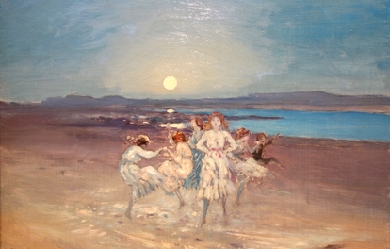
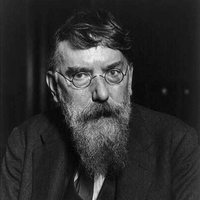
George William Russell (10 April 1867– 17 July 1935) who wrote with the pseudonym Æ (sometimes written AE or A.E.), was an Irish writer, editor, critic, poet, artistic painter and Irish nationalist. He was also a writer on mysticism, and a central personage in the group of devotees of theosophy which met in Dublin for many years.
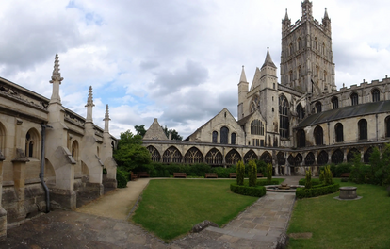
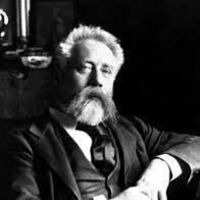
William Ernest Henley (23 August 1849 – 11 July 1903) was an English poet, critic and editor, best remembered for his 1875 poem “Invictus”. Henley was born in Gloucester and was the oldest of a family of six children, five sons and a daughter. His father, William, a bookseller and stationer, died in 1868 and was survived by young children and creditors. His mother, Mary Morgan, was descended from the poet and critic Joseph Wharton. Between 1861 and 1867, Henley was a pupil at the Crypt Grammar School (founded 1539).
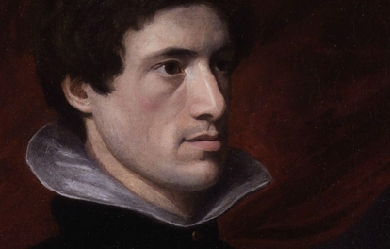
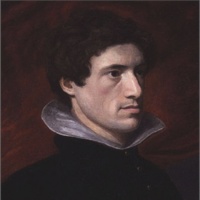
Charles Lamb (London, 10 February 1775 – Edmonton, 27 December 1834) was an English essayist, best known for his Essays of Elia and for the children's book Tales from Shakespeare, which he produced with his sister, Mary Lamb (1764–1847). Lamb has been referred to by E.V. Lucas, his principal biographer, as "the most lovable figure in English literature”. Youth and schooling Lamb was the son of Elizabeth Field and John Lamb. Lamb was the youngest child, with an 11 year older sister Mary, an even older brother John, and 4 other siblings who did not survive their infancy. John Lamb (father), who was a lawyer's clerk, spent most of his professional life as the assistant and servant to a barrister by the name of Samuel Salt who lived in the Inner Temple in London. It was there in the Inner Temple in Crown Office Row, that Charles Lamb was born and spent his youth. Lamb created a portrait of his father in his "Elia on the Old Benchers" under the name Lovel. Lamb's older brother was too much his senior to be a youthful companion to the boy but his sister Mary, being born eleven years before him, was probably his closest playmate. Lamb was also cared for by his paternal aunt Hetty, who seems to have had a particular fondness for him. A number of writings by both Charles and Mary suggest that the conflict between Aunt Hetty and her sister-in-law created a certain degree of tension in the Lamb household. However, Charles speaks fondly of her and her presence in the house seems to have brought a great deal of comfort to him. Some of Lamb's fondest childhood memories were of time spent with Mrs. Field, his maternal grandmother, who was for many years a servant to the Plummer family, who owned a large country house called Blakesware, near Widford, Hertfordshire. After the death of Mrs. Plummer, Lamb's grandmother was in sole charge of the large home and, as Mr. Plummer was often absent, Charles had free rein of the place during his visits. A picture of these visits can be glimpsed in the Elia essay Blakesmoor in H—shire. "Why, every plank and panel of that house for me had magic in it. The tapestried [sic] bed-rooms – tapestry so much better than painting – not adorning merely, but peopling the wainscots – at which childhood ever and anon would steal a look, shifting its coverlid (replaced as quickly) to exercise its tender courage in a momentary eye-encounter with those stern bright visages, staring reciprocally – all Ovid on the walls, in colours vivider than his descriptions.” Little is known about Charles's life before the age of seven. We know that Mary taught him to read at a very early age and he read voraciously. It is believed that he suffered from smallpox during his early years which forced him into a long period of convalescence. After this period of recovery Lamb began to take lessons from Mrs. Reynolds, a woman who lived in the Temple and is believed to have been the former wife of a lawyer. Mrs. Reynolds must have been a sympathetic schoolmistress because Lamb maintained a relationship with her throughout his life and she is known to have attended dinner parties held by Mary and Charles in the 1820s. E.V. Lucas suggests that sometime in 1781 Charles left Mrs. Reynolds and began to study at the Academy of William Bird. His time with William Bird did not last long, however, because by October 1782 Lamb was enrolled in Christ's Hospital, a charity boarding school chartered by King Edward VI in 1552. Christ's Hospital was a traditional English boarding school; bleak and full of violence. The headmaster, Mr. Boyer, has become famous for his teaching in Latin and Greek, but also for his brutality. A thorough record of Christ's Hospital in Several essays by Lamb as well as the Autobiography of Leigh Hunt and the Biographia Literaria of Samuel Taylor Coleridge, with whom Charles developed a friendship that would last for their entire lives. Despite the brutality Lamb got along well at Christ's Hospital, due in part, perhaps, to the fact that his home was not far distant thus enabling him, unlike many other boys, to return often to the safety of home. Years later, in his essay "Christ’s Hospital Five and Thirty Years Ago," Lamb described these events, speaking of himself in the third person as "L.” “I remember L. at school; and can well recollect that he had some peculiar advantages, which I and other of his schoolfellows had not. His friends lived in town, and were near at hand; and he had the privilege of going to see them, almost as often as he wished, through some invidious distinction, which was denied to us.” Christ's Hospital was a typical English boarding school and many students later wrote of the terrible violence they suffered there. The upper master of the school from 1778 to 1799 was Reverend James Boyer, a man renowned for his unpredictable and capricious temper. In one famous story Boyer was said to have knocked one of Leigh Hunt's teeth out by throwing a copy of Homer at him from across the room. Lamb seemed to have escaped much of this brutality, in part because of his amiable personality and in part because Samuel Salt, his father's employer and Lamb's sponsor at the school was one of the institute's Governors. Charles Lamb suffered from a stutter and this "an inconquerable impediment" in his speech deprived him of Grecian status at Christ's Hospital and thus disqualifying him for a clerical career. While Coleridge and other scholarly boys were able to go on to Cambridge, Lamb left school at fourteen and was forced to find a more prosaic career. For a short time he worked in the office of Joseph Paice, a London merchant and then, for 23 weeks, until 8 February 1792, held a small post in the Examiner's Office of the South Sea House. Its subsequent downfall in a pyramid scheme after Lamb left would be contrasted to the company's prosperity in the first Elia essay. On 5 April 1792 he went to work in the Accountant's Office for British East India Company, the death of his father's employer having ruined the family's fortunes.Charles would continue to work there for 25 years, until his retirement with pension. In 1792 while tending to his grandmother, Mary Field, in Hertfordshire, Charles Lamb fell in love with a young woman named Ann Simmons. Although no epistolary record exists of the relationship between the two, Lamb seems to have spent years wooing Miss Simmons. The record of the love exists in several accounts of Lamb's writing. Rosamund Gray is a story of a young man named Allen Clare who loves Rosamund Gray but their relationship comes to nothing because of the sudden death of Miss Gray. Miss Simmons also appears in several Elia essays under the name "Alice M." The essays "Dream Children," "New Year's Eve," and several others, speak of the many years that Lamb spent pursuing his love that ultimately failed. Miss Simmons eventually went on to marry a silversmith by the name of Bartram and Lamb called the failure of the affair his 'great disappointment. Family tragedy Charles and his sister Mary both suffered periods of mental illness. Charles spent six weeks in a psychiatric hospital during 1795. He was, however, already making his name as a poet. On 22 September 1796, a terrible event occurred: Mary, "worn down to a state of extreme nervous misery by attention to needlework by day and to her mother at night," was seized with acute mania and stabbed her mother to the heart with a table knife. Although there was no legal status of 'insanity' at the time, a jury returned a verdict of 'Lunacy' and therefore freed her from guilt of willful murder. With the help of friends Lamb succeeded in obtaining his sister's release from what would otherwise have been lifelong imprisonment, on the condition that he take personal responsibility for her safekeeping. Lamb used a large part of his relatively meagre income to keep his beloved sister in a private 'madhouse' in Islington called Fisher House. The 1799 death of John Lamb was something of a relief to Charles because his father had been mentally incapacitated for a number of years since suffering a stroke. The death of his father also meant that Mary could come to live again with him in Pentonville, and in 1800 they set up a shared home at Mitre Court Buildings in the Temple, where they lived until 1809. Despite Lamb's bouts of melancholia and alcoholism, both he and his sister enjoyed an active and rich social life. Their London quarters became a kind of weekly salon for many of the most outstanding theatrical and literary figures of the day. Charles Lamb, having been to school with Samuel Coleridge, counted Coleridge as perhaps his closest, and certainly his oldest, friend. On his deathbed, Coleridge had a mourning ring sent to Lamb and his sister. Fortuitously, Lamb's first publication was in 1796, when four sonnets by "Mr. Charles Lamb of the India House" appeared in Coleridge's Poems on Various Subjects. In 1797 he contributed additional blank verse to the second edition, and met the Wordsworths, William and Dorothy, on his short summer holiday with Coleridge at Nether Stowey, thereby also striking up a lifelong friendship with William. In London, Lamb became familiar with a group of young writers who favoured political reform, including Percy Bysshe Shelley, William Hazlitt, and Leigh Hunt. Lamb continued to clerk for the East India Company and doubled as a writer in various genres, his tragedy, John Woodvil, being published in 1802. His farce, Mr H, was performed at Drury Lane in 1807, where it was roundly booed. In the same year, Tales from Shakespeare (Charles handled the tragedies; his sister Mary, the comedies) was published, and became a best seller for William Godwin's "Children's Library." In 1819, at age 44, Lamb, who, because of family commitments, had never married, fell in love with an actress, Fanny Kelly, of Covent Garden, and proposed marriage. She refused him, and he died a bachelor. His collected essays, under the title Essays of Elia, were published in 1823 ("Elia" being the pen name Lamb used as a contributor to the London Magazine). A further collection was published ten years or so later, shortly before Lamb's death. He died of a streptococcal infection, erysipelas, contracted from a minor graze on his face sustained after slipping in the street, on 27 December 1834, just a few months after Coleridge. He was 59. From 1833 till their deaths Charles and Mary lived at Bay Cottage, Church Street, Edmonton north of London (now part of the London Borough of Enfield. Lamb is buried in All Saints' Churchyard, Edmonton. His sister, who was ten years his senior, survived him for more than a dozen years. She is buried beside him. Work Lamb's first publication was the inclusion of four sonnets in the Coleridge's Poems on Various Subjects published in 1796 by Joseph Cottle. The sonnets were significantly influenced by the poems of Burns and the sonnets of William Bowles, a largely forgotten poet of the late 18th century. His poems garnered little attention and are seldom read today. Lamb's contributions to the second edition of the Poems showed significant growth as a poet. These poems included The Tomb of Douglas and A Vision of Repentance. Because of a temporary fall-out with Coleridge, Lamb's poems were to be excluded in the third edition of the Poems. As it turned out, a third edition never emerged and instead Coleridge's next publication was the monumentally influential Lyrical Ballads co-published with Wordsworth. Lamb, on the other hand, published a book entitled Blank Verse with Charles Lloyd, the mentally unstable son of the founder of Lloyd's Bank. Lamb's most famous poem was written at this time entitled The Old Familiar Faces. Like most of Lamb's poems it is particularly sentimental but it is still remembered and widely read, often included in Poetic Collections. Of particular interest to Lambarians is the opening verse of the original version of The Old Familiar Faces which is concerned with Lamb's mother. It was a verse that Lamb chose to remove from the edition of his Collected Work published in 1818. I had a mother, but she died, and left me, Died prematurely in a day of horrors - All, all are gone, the old familiar faces. From a fairly young age Lamb desired to be a poet but never gained the success that he had hoped. Lamb lived under the poetic shadow of his friend Coleridge. In the final years of the 18th century Lamb began to work on prose with the novella entitled Rosamund Gray, a story of a young girl who was thought to be inspired by Ann Simmonds, with whom Charles Lamb was thought to be in love. Although the story is not particularly successful as a narrative because of Lamb's poor sense of plot, it was well thought of by Lamb's contemporaries and led Shelley to observe “what a lovely thing is Rosamund Gray! How much knowledge of the sweetest part of our nature in it!" (Quoted in Barnett, page 50) n the first years of the 19th century Lamb began his fruitful literary cooperation with his sister Mary. Together they wrote at least three books for William Godwin’s Juvenile Library. The most successful of these was of course Tales From Shakespeare which ran through two editions for Godwin and has now been published dozens of times in countless editions, many of them illustrated. Lamb also contributed a footnote to Shakespearean studies at this time with his essay "On the Tragedies of Shakespeare," in which he argues that Shakespeare should be read rather than performed in order to gain the proper effect of his dramatic genius. Beside contributing to Shakespeare studies with his book Tales From Shakespeare, Lamb also contributed to the popularization of Shakespeare's contemporaries with his book Specimens of the English Dramatic Poets Who Lived About the Time of Shakespeare. Although he did not write his first Elia essay until 1820, Lamb’s gradual perfection of the essay form for which he eventually became famous began as early 1802 in a series of open letters to Leigh Hunt’s Reflector. The most famous of these is called "The Londoner" in which Lamb famously derides the contemporary fascination with nature and the countryside. Legacy Anne Fadiman notes regretfully that Lamb is not widely read in modern times: "I do not understand why so few other readers are clamoring for his company... [he] is kept alive largely through the tenuous resuscitations of university English departments." Lamb was honoured by The Latymer School, a grammar school in Edmonton, a suburb of London where he lived for a time; it has six houses, one of which, "Lamb", is named after Charles. Selected works * Blank Verse, poetry, 1798 * A Tale of Rosamund Gray, and old blind Margaret, 1798 * John Woodvil, poetic drama, 1802 * Tales from Shakespeare, 1807 * The Adventures of Ulysses, 1808 * Specimens of English Dramatic poets who lived about the time of Shakespeare, 1808 * On the Tragedies of Shakespeare, 1811 * Witches and Other Night Fears, 1821 * The Pawnbroker's Daughter, 1825 * Eliana, 1867 * Essays of Elia, 1823 * The Last Essays of Elia, 1833 References Wikipedia – http://en.wikipedia.org/wiki/Charles_Lamb
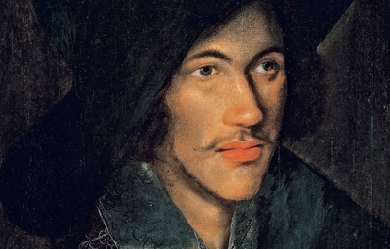

John Donne (between 24 January and 19 June 1572 – 31 March 1631) was an English poet, satirist, lawyer and priest. He is considered the pre-eminent representative of the metaphysical poets. His works are noted for their strong, sensual style and include sonnets, love poetry, religious poems, Latin translations, epigrams, elegies, songs, satires and sermons. His poetry is noted for its vibrancy of language and inventiveness of metaphor, especially compared to that of his contemporaries. Donne's style is characterised by abrupt openings and various paradoxes, ironies and dislocations. These features, along with his frequent dramatic or everyday speech rhythms, his tense syntax and his tough eloquence, were both a reaction against the smoothness of conventional Elizabethan poetry and an adaptation into English of European baroque and mannerist techniques. His early career was marked by poetry that bore immense knowledge of British society and he met that knowledge with sharp criticism. Another important theme in Donne’s poetry is the idea of true religion, something that he spent much time considering and theorising about. He wrote secular poems as well as erotic and love poems. He is particularly famous for his mastery of metaphysical conceits. Despite his great education and poetic talents, Donne lived in poverty for several years, relying heavily on wealthy friends. He spent much of the money he inherited during and after his education on womanising, literature, pastimes, and travel. In 1601, Donne secretly married Anne Moore, with whom he had twelve children. In 1615, he became an Anglican priest, although he did not want to take Anglican orders. He did so because King James I persistently ordered it. In 1621, he was appointed the Dean of St Paul's Cathedral in London. He also served as a member of parliament in 1601 and in 1614. Early life Donne was born in London, into a Roman Catholic family when practice of that religion was illegal in England. Donne was the third of six children. His father, also named John Donne, was of Welsh descent and a warden of the Ironmongers Company in the City of London. Donne's father was a respected Roman Catholic who avoided unwelcome government attention out of fear of persecution. Donne's father died in 1576, leaving his wife, Elizabeth Heywood, the responsibility of raising their children. Elizabeth was also from a recusant Roman Catholic family, the daughter of John Heywood, the playwright, and sister of the Reverend Jasper Heywood, a Jesuit priest and translator. She was a great-niece of the Roman Catholic martyr Thomas More. This tradition of martyrdom would continue among Donne’s closer relatives, many of whom were executed or exiled for religious reasons. Donne was educated privately; however, there is no evidence to support the popular claim that he was taught by Jesuits. Donne's mother married Dr. John Syminges, a wealthy widower with three children, a few months after Donne's father died. Two more of his sisters, Mary and Katherine, died in 1581. Donne's mother, who had lived in the Deanery after Donne became Dean of St. Paul's, survived him, dying in 1632 Donne was a student at Hart Hall, now Hertford College, Oxford, from the age of 11. After three years at Oxford he was admitted to the University of Cambridge, where he studied for another three years. He was unable to obtain a degree from either institution because of his Catholicism, since he could not take the Oath of Supremacy required of graduates. In 1591 he was accepted as a student at the Thavies Inn legal school, one of the Inns of Chancery in London. On 6 May 1592 he was admitted to Lincoln’s Inn, one of the Inns of Court. His brother Henry was also a university student prior to his arrest in 1593 for harbouring a Catholic priest, William Harrington, whom Henry betrayed under torture. Harrington was tortured on the rack, hanged until not quite dead, then was subjected to disembowelment. Henry Donne died in Newgate prison of bubonic plague, leading John Donne to begin questioning his Catholic faith. During and after his education, Donne spent much of his considerable inheritance on women, literature, pastimes and travel. Although there is no record detailing precisely where he travelled, it is known that he travelled across Europe and later fought with the Earl of Essex and Sir Walter Raleigh against the Spanish at Cadiz (1596) and the Azores (1597) and witnessed the loss of the Spanish flagship, the San Felipe. According to Izaak Walton, who wrote a biography of Donne in 1658: ... he returned not back into England till he had stayed some years, first in Italy, and then in Spain, where he made many useful observations of those countries, their laws and manner of government, and returned perfect in their languages. —Izaak Walton By the age of 25 he was well prepared for the diplomatic career he appeared to be seeking. He was appointed chief secretary to the Lord Keeper of the Great Seal, Sir Thomas Egerton, and was established at Egerton’s London home, York House, Strand close to the Palace of Whitehall, then the most influential social centre in England. Marriage to Anne More During the next four years, he fell in love with Egerton's niece Anne More. They were married just before Christmas in 1601, against the wishes of both Egerton and George More, who was Lieutenant of the Tower and Anne's father. This wedding ruined Donne's career and earned him a short stay in Fleet Prison, along with Samuel Brooke, who married them, and the man who acted as a witness to the wedding. Donne was released when the marriage was proven valid, and he soon secured the release of the other two. Walton tells us that when Donne wrote to his wife to tell her about losing his post, he wrote after his name: John Donne, Anne Donne, Un-done. It was not until 1609 that Donne was reconciled with his father-in-law and received his wife's dowry. After his release, Donne had to accept a retired country life in Pyrford, Surrey. Over the next few years, he scraped a meagre living as a lawyer, depending on his wife’s cousin Sir Francis Wolly to house him, his wife, and their children. Because Anne Donne bore a new baby almost every year, this was a very generous gesture. Though he practised law and may have worked as an assistant pamphleteer to Thomas Morton, Donne was in a constant state of financial insecurity, with a growing family to provide for. Anne bore twelve children in sixteen years of marriage (including two stillbirths—their eighth and then, in 1617, their last child); indeed, she spent most of her married life either pregnant or nursing. The ten surviving children were Constance, John, George, Francis, Lucy (named after Donne's patroness Lucy, Countess of Bedford, her godmother), Bridget, Mary, Nicholas, Margaret, and Elizabeth. Francis, Nicholas, and Mary died before they were ten. In a state of despair, Donne noted that the death of a child would mean one less mouth to feed, but he could not afford the burial expenses. During this time, Donne wrote, but did not publish, Biathanatos, his defence of suicide. His wife died on 15 August 1617, five days after giving birth to their twelfth child, a still-born baby. Donne mourned her deeply, and wrote of his love and loss in his 17th Holy Sonnet. Career and later life Donne was elected as Member of Parliament for the constituency of Brackley in 1602, but this was not a paid position. The fashion for coterie poetry of the period gave him a means to seek patronage and many of his poems were written for wealthy friends or patrons, especially Sir Robert Drury, who came to be Donne's chief patron in 1610. Donne wrote the two Anniversaries, An Anatomy of the World (1611) and Of the Progress of the Soul, (1612), for Drury. In 1610 and 1611 he wrote two anti-Catholic polemics: Pseudo-Martyr and Ignatius his Conclave. Although James was pleased with Donne's work, he refused to reinstate him at court and instead urged him to take holy orders. At length, Donne acceded to the King's wishes and in 1615 was ordained into the Church of England. Donne was awarded an honorary doctorate in divinity from Cambridge in 1615 and became a Royal Chaplain in the same year, and was made a Reader of Divinity at Lincoln's Inn in 1616. In 1618 he became chaplain to Viscount Doncaster, who was on an embassy to the princes of Germany. Donne did not return to England until 1620. In 1621 Donne was made Dean of St Paul's, a leading (and well-paid) position in the Church of England and one he held until his death in 1631. During his period as Dean his daughter Lucy died, aged eighteen. In late November and early December 1623 he suffered a nearly fatal illness, thought to be either typhus or a combination of a cold followed by a period of fever. During his convalescence he wrote a series of meditations and prayers on health, pain, and sickness that were published as a book in 1624 under the title of Devotions upon Emergent Occasions. One of these meditations, Meditation XVII, later became well known for its phrase "for whom the bell tolls" and the statement that "no man is an island". In 1624 he became vicar of St Dunstan-in-the-West, and 1625 a prolocutor to Charles I. He earned a reputation as an eloquent preacher and 160 of his sermons have survived, including the famous Death’s Duel sermon delivered at the Palace of Whitehall before King Charles I in February 1631. Death It is thought that his final illness was stomach cancer, although this has not been proven. He died on 31 March 1631 having written many poems, most only in manuscript. Donne was buried in old St Paul's Cathedral, where a memorial statue of him was erected (carved from a drawing of him in his shroud), with a Latin epigraph probably composed by himself. Donne's monument survived the 1666 fire, and is on display in the present building. Writings Early poetry Donne's earliest poems showed a developed knowledge of English society coupled with sharp criticism of its problems. His satires dealt with common Elizabethan topics, such as corruption in the legal system, mediocre poets, and pompous courtiers. His images of sickness, vomit, manure, and plague reflected his strongly satiric view of a world populated by all the fools and knaves of England. His third satire, however, deals with the problem of true religion, a matter of great importance to Donne. He argued that it was better to examine carefully one's religious convictions than blindly to follow any established tradition, for none would be saved at the Final Judgment, by claiming "A Harry, or a Martin taught [them] this." Donne's early career was also notable for his erotic poetry, especially his elegies, in which he employed unconventional metaphors, such as a flea biting two lovers being compared to sex. In Elegy XIX: To His Mistress Going to Bed, he poetically undressed his mistress and compared the act of fondling to the exploration of America. In Elegy XVIII, he compared the gap between his lover's breasts to the Hellespont. Donne did not publish these poems, although did allow them to circulate widely in manuscript form. ... any mans death diminishes me, because I am involved in Mankinde; And therefore never send to know for whom the bell tolls; It tolls for thee.. Some have speculated that Donne's numerous illnesses, financial strain, and the deaths of his friends all contributed to the development of a more somber and pious tone in his later poems. The change can be clearly seen in "An Anatomy of the World" (1611), a poem that Donne wrote in memory of Elizabeth Drury, daughter of his patron, Sir Robert Drury of Hawstead, Suffolk. This poem treats Elizabeth's demise with extreme gloominess, using it as a symbol for the Fall of Man and the destruction of the universe. The poem "A Nocturnal upon S. Lucy's Day, Being the Shortest Day", concerns the poet's despair at the death of a loved one. In it Donne expresses a feeling of utter negation and hopelessness, saying that "I am every dead thing...re-begot / Of absence, darkness, death." This famous work was probably written in 1627 when both Donne's friend Lucy, Countess of Bedford, and his daughter Lucy Donne died. Three years later, in 1630, Donne wrote his will on Saint Lucy's day (13 December), the date the poem describes as "Both the year's, and the day's deep midnight." The increasing gloominess of Donne's tone may also be observed in the religious works that he began writing during the same period. His early belief in the value of scepticism now gave way to a firm faith in the traditional teachings of the Bible. Having converted to the Anglican Church, Donne focused his literary career on religious literature. He quickly became noted for his sermons and religious poems. The lines of these sermons would come to influence future works of English literature, such as Ernest Hemingway's For Whom the Bell Tolls, which took its title from a passage in Meditation XVII of Devotions upon Emergent Occasions, and Thomas Merton’s No Man is an Island, which took its title from the same source. Towards the end of his life Donne wrote works that challenged death, and the fear that it inspired in many men, on the grounds of his belief that those who die are sent to Heaven to live eternally. One example of this challenge is his Holy Sonnet X, Death Be Not Proud, from which come the famous lines “Death, be not proud, though some have called thee / Mighty and dreadful, for thou art not so.” Even as he lay dying during Lent in 1631, he rose from his sickbed and delivered the Death's Duel sermon, which was later described as his own funeral sermon. Death’s Duel portrays life as a steady descent to suffering and death, yet sees hope in salvation and immortality through an embrace of God, Christ and the Resurrection. Style His work has received much criticism over the years, especially concerning his metaphysical form. Donne is generally considered the most prominent member of the Metaphysical poets, a phrase coined in 1781 by the critic Dr Johnson, following a comment on Donne by the poet John Dryden. Dryden had written of Donne in 1693: "He affects the metaphysics, not only in his satires, but in his amorous verses, where nature only should reign; and perplexes the minds of the fair sex with nice speculations of philosophy, when he should engage their hearts, and entertain them with the softnesses of love." In Life of Cowley (from Samuel Johnson's 1781 work of biography and criticism Lives of the Most Eminent English Poets), Johnson refers to the beginning of the seventeenth century in which there "appeared a race of writers that may be termed the metaphysical poets". Donne's immediate successors in poetry therefore tended to regard his works with ambivalence, with the Neoclassical poets regarding his conceits as abuse of the metaphor. However he was revived by Romantic poets such as Coleridge and Browning, though his more recent revival in the early twentieth century by poets such as T. S. Eliot and critics like F R Leavis tended to portray him, with approval, as an anti-Romantic. Donne's work suggests a healthy appetite for life and its pleasures, while also expressing deep emotion. He did this through the use of conceits, wit and intellect—as seen in the poems "The Sun Rising" and "Batter My Heart". Donne is considered a master of the metaphysical conceit, an extended metaphor that combines two vastly different ideas into a single idea, often using imagery. An example of this is his equation of lovers with saints in "The Canonization". Unlike the conceits found in other Elizabethan poetry, most notably Petrarchan conceits, which formed clichéd comparisons between more closely related objects (such as a rose and love), metaphysical conceits go to a greater depth in comparing two completely unlike objects. One of the most famous of Donne's conceits is found in "A Valediction: Forbidding Mourning" where he compares two lovers who are separated to the two legs of a compass. Donne's works are also witty, employing paradoxes, puns, and subtle yet remarkable analogies. His pieces are often ironic and cynical, especially regarding love and human motives. Common subjects of Donne's poems are love (especially in his early life), death (especially after his wife's death), and religion. John Donne's poetry represented a shift from classical forms to more personal poetry. Donne is noted for his poetic metre, which was structured with changing and jagged rhythms that closely resemble casual speech (it was for this that the more classical-minded Ben Jonson commented that "Donne, for not keeping of accent, deserved hanging"). Some scholars believe that Donne's literary works reflect the changing trends of his life, with love poetry and satires from his youth and religious sermons during his later years. Other scholars, such as Helen Gardner, question the validity of this dating—most of his poems were published posthumously (1633). The exception to these is his Anniversaries which were published in 1612 and Devotions upon Emergent Occasions published in 1624. His sermons are also dated, sometimes specifically by date and year. Legacy Donne is commemorated as a priest in the calendar of the Church of England and in the Calendar of Saints of the Evangelical Lutheran Church in America on 31 March. Sylvia Plath, interviewed on BBC Radio in late 1962, said the following about a book review of her collection of poems titled The Colossus that had been published in the United Kingdom two years earlier: "I remember being appalled when someone criticised me for beginning just like John Donne but not quite managing to finish like John Donne, and I felt the weight of English literature on me at that point." The memorial to Donne, modelled after the engraving pictured above, was one of the few such memorials to survive the Great Fire of London in 1666 and now appears in St Paul's Cathedral where Donne is buried. Donne in literature Donne has appeared in several works of literature: * In Margaret Edson's Pulitzer prize-winning play Wit (1999), the main character, a professor of 17th century poetry specialising in Donne, is dying of cancer. The play was adapted for the HBO film Wit starring Emma Thompson. * Donne's Songs and Sonnets feature in The Calligrapher (2003), a novel by Edward Docx. * In the 2006 novel The Meaning of Night by Michael Cox, Donne's works are frequently quoted. * Donne appears, along with his wife Anne and daughter Pegge, in the award-winning novel Conceit (2007) by Mary Novik. * Joseph Brodsky has a poem called "Elegy for John Donne". * The love story of Donne and Anne More is the subject of Maeve Haran's 2010 historical novel The Lady and the Poet. * An excerpt from "Meditation 17 Devotions Upon Emergent Occasions" serves as the opening for Ernest Hemingway's For Whom The Bell Tolls. * Marilynne Robinson's Pulitzer prize-winning novel Gilead makes several references to Donne's work. * Donne is the favourite poet of Dorothy Sayers' fictional detective Lord Peter Wimsey, and the Wimsey books include numerous quotations from, and allusions to, his work. * Donne's poem 'A Fever' (incorrectly called 'The Fever') is mentioned in the penultimate paragraph of the novel "The Silence of the Lambs" by Thomas Harris. * Edmund "Bunny" Corcoran writes a paper on Donne in Donna Tartt's novel The Secret History, in which he ties together Donne and Izaak Walton with help of an imaginary philosophy called "Metahemeralism". * Donne plays a significant role in Christie Dickason's The Noble Assassin (2011), a novel based on the life of Donne's patron and putative lover, Lucy Russell, Countess of Bedford. References Wikipedia - http://en.wikipedia.org/wiki/John_Donne
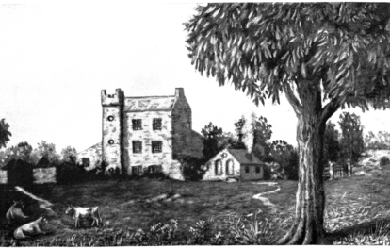
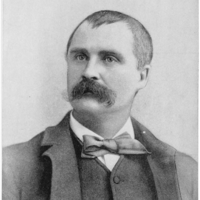
John Boyle O’Reilly (28 June 1844–10 August 1890) was an Irish-born poet, journalist and fiction writer. As a youth in Ireland, he was a member of the Irish Republican Brotherhood, or Fenians, for which he was transported to Western Australia. After escaping to the United States, he became a prominent spokesperson for the Irish community and culture, through his editorship of the Boston newspaper The Pilot, his prolific writing, and his lecture tours.
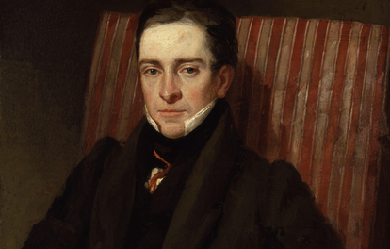
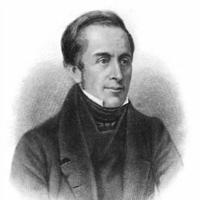
Thomas Hood (23 May 1799– 3 May 1845) was an English poet, author and humourist, best known for poems such as “The Bridge of Sighs” and “The Song of the Shirt”. Hood wrote regularly for The London Magazine, the Athenaeum, and Punch. He later published a magazine largely consisting of his own works. Hood, never robust, lapsed into invalidism by the age of 41 and died at the age of 45. William Michael Rossetti in 1903 called him “the finest English poet” between the generations of Shelley and Tennyson. Hood was the father of playwright and humourist Tom Hood (1835–1874).
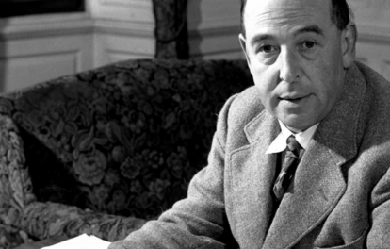
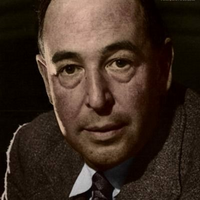
Clive Staples Lewis (29 November 1898 – 22 November 1963), commonly called C. S. Lewis and known to his friends and family as “Jack”, was a novelist, poet, academic, medievalist, literary critic, essayist, lay theologian, and Christian apologist. Born in Belfast, Ireland, he held academic positions at both Oxford University (Magdalen College), 1925–1954, and Cambridge University (Magdalene College), 1954–1963. He is best known both for his fictional work, especially The Screwtape Letters, The Chronicles of Narnia, and The Space Trilogy, and for his non-fiction Christian apologetics, such as Mere Christianity, Miracles, and The Problem of Pain. Lewis and fellow novelist J. R. R. Tolkien were close friends. Both authors served on the English faculty at Oxford University, and both were active in the informal Oxford literary group known as the “Inklings”. According to his memoir Surprised by Joy, Lewis had been baptized in the Church of Ireland (part of the Anglican Communion) at birth, but fell away from his faith during his adolescence. Owing to the influence of Tolkien and other friends, at the age of 32 Lewis returned to the Anglican Communion, becoming “a very ordinary layman of the Church of England”. His faith had a profound effect on his work, and his wartime radio broadcasts on the subject of Christianity brought him wide acclaim.
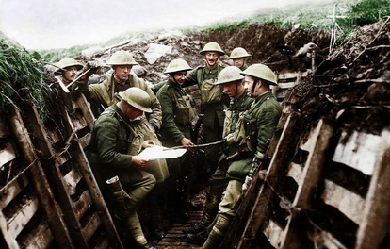
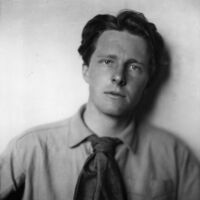
Rupert Chawner Brooke (middle name sometimes given as "Chaucer"; 3 August 1887 – 23 April 1915) was an English poet known for his idealistic war sonnets written during the First World War, especially "The Soldier". He was also known for his boyish good looks, which were said to have prompted the Irish poet W. B. Yeats to describe him as "the handsomest young man in England”. Brooke belonged to another literary group known as the Georgian Poets and was one of the most important of the Dymock poets, associated with the Gloucestershire village of Dymock where he spent some time before the war. He also lived in the Old Vicarage, Grantchester. While travelling in Europe he prepared a thesis, entitled "John Webster and the Elizabethan Drama", which won him a scholarship to King's College, Cambridge, where he became a member of the Cambridge Apostles, was elected as President of the Cambridge University Fabian Society, helped found the Marlowe Society drama club and acted in plays including the Cambridge Greek Play. To Rupert Brooke (by Eden Phillpotts, from ‘Plain Song, 1914-1916’) Though we, a happy few, Indubitably knew That from the purple came This poet of pure flame, The world first saw his light Flash on an evil night, And heard his song from far Above the drone of war. Out of the primal dark He leapt, like lyric lark, Singing his aubade strain; Then fell to earth again. We garner all he gave, And on his hero grave, For love and honour strew, Rosemary, myrtle, rue. Son of the Morning, we Had kept you thankfully; But yours the asphodel: Hail, singer, and farewell!
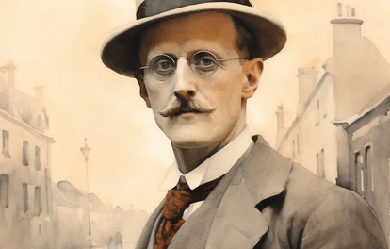

James Augustine Aloysius Joyce (2 February 1882 – 13 January 1941) was an Irish novelist and poet, considered to be one of the most influential writers in the modernist avant-garde of the early 20th century. Joyce is best known for Ulysses (1922), a landmark work in which the episodes of Homer's Odyssey are paralleled in an array of contrasting literary styles, perhaps most prominently the stream of consciousness technique he perfected. Other major works are the short-story collection Dubliners (1914), and the novels A Portrait of the Artist as a Young Man (1916) and Finnegans Wake (1939). His complete oeuvre includes three books of poetry, a play, occasional journalism, and his published letters.
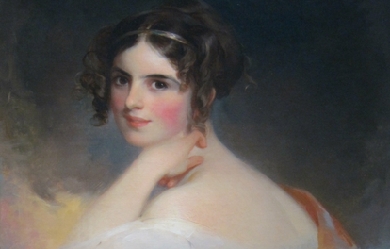
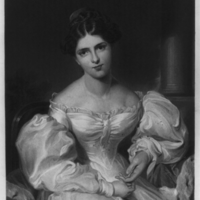
Frances Anne “Fanny” Kemble (27 November 1809– 15 January 1893) was a notable British actress from a theatre family in the early and mid-19th century. She was a well-known and popular writer, whose published works included plays, poetry, eleven volumes of memoirs, travel writing and works about the theatre.
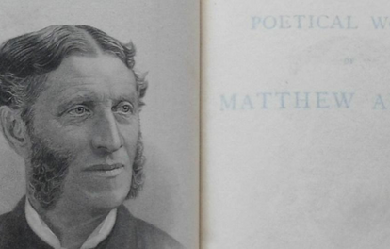
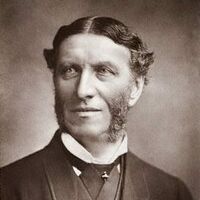
Although remembered now for his elegantly argued critical essays, Matthew Arnold (1822-1888) began his career as a poet, winning early recognition as a student at the Rugby School where his father, Thomas Arnold, had earned national acclaim as a strict and innovative headmaster. Arnold also studied at Balliol College, Oxford University. In 1844, after completing his undergraduate degree at Oxford, he returned to Rugby as a teacher of classics. After marrying in 1851, Arnold began work as a government school inspector, a grueling position which nonetheless afforded him the opportunity to travel throughout England and the Continent. Throughout his thirty-five years in this position Arnold developed an interest in education, an interest which fed into both his critical works and his poetry. Empedocles on Etna (1852) and Poems (1853) established Arnold's reputation as a poet and in 1857 he was offered a position, which he accepted and held until 1867, as Professor of Poetry at Oxford. Arnold became the first professor to lecture in English rather than Latin. During this time Arnold wrote the bulk of his most famous critical works, Essays in Criticism (1865) and Culture and Anarchy (1869), in which he sets forth ideas that greatly reflect the predominant values of the Victorian era. Meditative and rhetorical, Arnold's poetry often wrestles with problems of psychological isolation. In "To Marguerite—Continued," for example, Arnold revises Donne's assertion that "No man is an island," suggesting that we "mortals" are indeed "in the sea of life enisled." Other well-known poems, such as "Dover Beach," link the problem of isolation with what Arnold saw as the dwindling faith of his time. Despite his own religious doubts, a source of great anxiety for him, in several essays Arnold sought to establish the essential truth of Christianity. His most influential essays, however, were those on literary topics. In "The Function of Criticism" (1865) and "The Study of Poetry" (1880) Arnold called for a new epic poetry: a poetry that would address the moral needs of his readers, "to animate and ennoble them." Arnold's arguments, for a renewed religious faith and an adoption of classical aesthetics and morals, are particularly representative of mainstream Victorian intellectual concerns. His approach—his gentlemanly and subtle style—to these issues, however, established criticism as an art form, and has influenced almost every major English critic since, including T. S. Eliot, Lionel Trilling, and Harold Bloom. Though perhaps less obvious, the tremendous influence of his poetry, which addresses the poet's most innermost feelings with complete transparency, can easily be seen in writers as different from each other as W. B. Yeats, James Wright, Sylvia Plath, and Sharon Olds. Late in life, in 1883 and 1886, Arnold made two lecturing tours of the United States. Matthew Arnold died in Liverpool in 1888. A Selected Bibliography Poetry A Matthew Arnold Birthday Book (1883) Alaric at Rome: A Prize Poem (1840) Cromwell: A Prize Poem (1843) Empedocles on Etna and Other Poems (1852) Empedocles on Etna: A Dramatic Poem (1900) Merope: A Tragedy (1858) New Poems (1867) Poems: A New Edition (1853) Poems: Second Series (1855) The Poems of Matthew Arnold (1965) The Poetical Works of Matthew Arnold (1950) The Strayed Reveller and Other Poems (1849) The Works of Matthew Arnold (1903) Prose Essays, Letters, and Reviews by Matthew Arnold Essays, Letters, and Reviews by Matthew Arnold (1960) Friendship's Garland (1883) "Charles Augustin Sainte-Beuve," in Encyclopedia Britannica, ninth edition, IX: 162-165 (1886) "Isaiah of Jerusalem" in the Authorized English Version, with an Introduction, Corrections and Notes (1883) "Schools," in The Reign of Queen Victoria (1887) A Bible-Reading for Schools: The Great Prophecy of Israel's Restoration (1872) A French Eton; or, Middle Class Education and the State (1864) Arnold as Dramatic Critic (1903) Civilization in the United States: First and Last Impressions of America (1888) Complete Prose Works (1960) Culture and Anarchy (1883) Culture and Anarchy: An Essay in Political and Social Criticism (1869) Culture and the State (1965) Discourses in America (1885) Education Department (1886) England and the Italian Question (1859) England and the Italian Question, (1953) Essays in Criticism (1865) Essays in Criticism: Second Series (1888) Essays in Criticism: Third Series (1910) Five Uncollected Essays of Matthew Arnold (1953) General Grant, with a Rejoinder by Mark Twain (1966) General Grant: An Estimate (1887) God and the Bible: A Review of Objections to "Literature and Dogma" (1875) Heinrich Heine (1863) Higher Schools and Universities in Germany (1874) Irish Essays, and Others (1882) Isaiah XLLXVI; with the Shorter Prophecies Allied to It (1875) Last Essays on Church and Religion (1877) Letters of Matthew Arnold, 1848-1888 (1895) Letters of an Old Playgoer (1919) Letters, Speeches and Tracts on Irish Affairs by Edmund Burke (1881) Literature and Dogma: An Essay towards a Better Apprehension of the Bible (1873) Matthew Arnold's Letters: A Descriptive Checklist (1968) Matthew Arnold's Notebooks (1902) Mixed Essays (1879) On Home Rule for Ireland: Two Letters to "The Times" (1891) On Translating Homer: Last Words: A Lecture Given at Oxford (1862) On Translating Homer: Three Lectures Given at Oxford (1861) On the Modern Element in Literature (1869) On the Study of Celtic Literature (1883) Poems of Wordsworth (1879) Poetry of Byron (1881) Reports on Elementary Schools 1852-1882 (1889) Schools and Universities on the Continent (1867) St. Paul and Protestantism; with an Introduction on Puritanism and the Church of England (1883) The Hundred Greatest Men: Portraits of the One Hundred Greatest Men of History (1879) The Letters of Matthew Arnold to Arthur Hugh Clough (1932) The Note-Books of Matthew Arnold (1952) The Popular Education of France, with Notices of That of Holland and Switzerland (1861) The Six Chief Lives from Johnson's "Lives of the Poets," with Macaulay's "Life of Johnson," (1878) The Study of Poetry (1880) Thoughts on Education Chosen From the Writings of Matthew Arnold (1912) Unpublished Letters of Matthew Arnold (1923) References Poets.org - www.poets.org/poet.php/prmPID/88
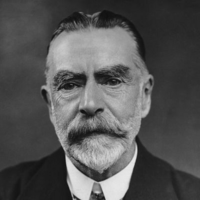
William Arthur Dunkerley (12 November 1852 – 23 January 1941) was an English journalist, novelist and poet. He was born in Manchester, spent a short time after his marriage in the US before moving to Ealing, West London, where he served as deacon and teacher at the Ealing Congregational Church from the 1880s. In 1922 he moved to Worthing in Sussex, where he became the town’s mayor.Dunkerley wrote under his own name, and also as John Oxenham for his poetry, hymn-writing, and novels. His poetry includes Bees in Amber: A Little Book of Thoughtful Verse (1913), which became a bestseller. He also wrote the poem “Greatheart”. He used the pseudonym Julian Ross for journalism. In February 1892 Robert Barr and Dunkerley founded The Idler, a monthly “general interest magazine, one of the first to appear following the enthusiastic reception of The Strand, but not a slavish imitation”. Barr and Dunkerley/Oxenham both contributed as writers. The editors were Barr and Jerome K. Jerome initially.Dunkerley had two sons and four daughters, of whom the eldest, and eldest child, Elsie Jeanette, became well known as a children’s writer, particularly through her Abbey Series of girls’ school stories. Another daughter, Erica, also used the Oxenham pen-name. The elder son, Roderic Dunkerley, had several titles published under his own name. References Wikipedia—https://en.wikipedia.org/wiki/William_Arthur_Dunkerley
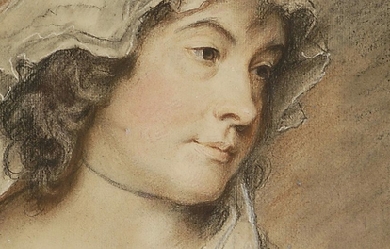
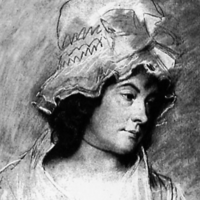
Charlotte Turner Smith (4 May 1749– 28 October 1806) was an English Romantic poet and novelist. She initiated a revival of the English sonnet, helped establish the conventions of Gothic fiction, and wrote political novels of sensibility. Smith was born into a wealthy family and received a typical education for a woman during the late 18th century. However, her father’s reckless spending forced her to marry early. In a marriage that she later described as prostitution, she was given by her father to the violent and profligate Benjamin Smith. Their marriage was deeply unhappy, although they had twelve children together. Charlotte joined Benjamin in debtor’s prison, where she wrote her first book of poetry, Elegiac Sonnets. Its success allowed her to help pay for Benjamin’s release. Benjamin’s father attempted to leave money to Charlotte and her children upon his death, but legal technicalities prevented her from ever acquiring it. Charlotte Smith eventually left Benjamin and began writing to support their children. Smith’s struggle to provide for her children and her frustrated attempts to gain legal protection as a woman provided themes for her poetry and novels; she included portraits of herself and her family in her novels as well as details about her life in her prefaces. Her early novels are exercises in aesthetic development, particularly of the Gothic and sentimentality. “The theme of her many sentimental and didactic novels was that of a badly married wife helped by a thoughtful sensible lover” (Smith’s entry in British Authors Before 1800: A Biographical Dictionary Ed. Stanley Kunitz and Howard Haycraft. New York: H.W. Wilson, 1952. pg. 478.) Her later novels, including The Old Manor House, often considered her best, support the ideals of the French Revolution. Smith was a successful writer, publishing ten novels, three books of poetry, four children’s books, and other assorted works, over the course of her career. She always saw herself as a poet first and foremost, however, as poetry was considered the most exalted form of literature at the time. Scholars credit Smith with transforming the sonnet into an expression of woeful sentiment that would pave the way for poets such as Coleridge, Wordsworth, Shelly and Keats. Smith’s poetry and prose was praised by contemporaries such as Romantic poets William Wordsworth and Samuel Taylor Coleridge as well as novelist Walter Scott. Coleridge, in 1796, even remarked that “those sonnets appear to me the most exquisite, in which moral Sentiments, Affections, or Feelings, are deduced from, and associated with the scenery of Nature”. After 1798, Smith’s popularity waned and by 1803 she was destitute and ill—she could barely hold a pen. She had to sell her books to pay off her debts. In 1806, Smith died. Largely forgotten by the middle of the 19th century, her works have now been republished and she is recognized as an important Romantic writer. Early life Smith was born on 4 May 1749 in London and baptized on 12 June; she was the oldest child of well-to-do Nicholas Turner and Anna Towers. Her two younger siblings, Nicholas and Catherine Ann, were born within the next five years. Smith’s childhood was shaped by her mother’s early death (probably in giving birth to Catherine) and her father’s reckless spending. After losing his wife, Nicholas Turner travelled and the children were raised by Lucy Towers, their maternal aunt (when exactly their father returned is unknown). At the age of six, Charlotte went to school in Chichester and took drawing lessons from the painter George Smith. Two years later, she, her aunt, and her sister moved to London and she attended a girls school in Kensington where she learned dancing, drawing, music, and acting. She loved to read and wrote poems, which her father encouraged. She even submitted a few to the Lady’s Magazine for publication, but they were not accepted. Marriage and first publication Smith’s father encountered financial difficulties upon his return to England and he was forced to sell some of the family’s holdings and to marry the wealthy Henrietta Meriton in 1765. Smith entered society at the age of twelve, leaving school and being tutored at home. On 23 February 1765, at the age of fifteen, she married Benjamin Smith, the son of Richard Smith, a wealthy West Indian merchant and a director of the East India Company. The proposal was accepted for her by her father; forty years later, Smith condemned her father’s action, which she wrote had turned her into a “legal prostitute”. Smith’s marriage was unhappy. She detested living in commercial Cheapside (the family later moved to Southgate and Tottenham) and argued with her in-laws, who she believed were unrefined and uneducated. They, in turn, mocked her for spending time reading, writing, and drawing. Even worse, Benjamin proved to be violent, unfaithful, and profligate. Only her father-in-law, Richard, appreciated her writing abilities, although he wanted her to use them to further his business interests. Richard Smith owned plantations in Barbados and he and his second wife brought five slaves to England, who, along with their descendants, were included as part of the family property in his will. Although Charlotte Smith later argued against slavery in works such as The Old Manor House (1793) and “Beachy Head”, she herself benefited from the income and slave labor of Richard Smith’s plantations. In 1766, Charlotte and Benjamin had their first child, who died the next year just days after the birth of their second, Benjamin Berney (1767–77). Between 1767 and 1785, the couple had ten more children: William Towers (born 1768), Charlotte Mary (born c. 1769), Braithwaite (born 1770), Nicholas Hankey (1771–1837), Married Anni Petroose (1779–1843), Charles Dyer (born 1773), Anna Augusta (1774–94), Lucy Eleanor (born 1776), Lionel (1778–1842), Harriet (born c. 1782), and George (born c. 1785). Only six of Smith’s children survived her. Smith assisted in the family business that her husband had abandoned by helping Richard Smith with his correspondence. She persuaded Richard to set Benjamin up as a gentleman farmer in Hampshire and lived with him at Lys Farm from 1774 until 1783. Worried about Charlotte’s future and that of his grandchildren and concerned that his son would continue his irresponsible ways, Richard Smith willed the majority of his property to Charlotte’s children. However, because he had drawn up the will himself, the documents contained legal problems. The inheritance, originally worth nearly £36,000, was tied up in chancery after his death in 1776 for almost forty years. Smith and her children saw little of it. (It has been proposed that this real case may have inspired the famous fictional case of Jarndyce and Jarndyce, in Dickens’s Bleak House.) In fact, Benjamin illegally spent at least a third of the legacy and ended up in King’s Bench Prison in December 1783. Smith moved in with him and it was in this environment that she wrote and published her first work, Elegiac Sonnets (1784). Elegiac Sonnets achieved instant success, allowing Charlotte to pay for their release from prison. Smith’s sonnets helped initiate a revival of the form and granted an aura of respectability to her later novels (poetry was considered the highest art form at the time). Smith revised Elegiac Poems several times over the years, eventually creating a two-volume work. Novelist After Benjamin Smith was released from prison, the entire family moved to Dieppe, France to avoid further creditors. Charlotte returned to negotiate with them, but failed to come to an agreement. She went back to France and in 1784 began translating works from French into English. In 1787 she published The Romance of Real Life, consisting of translated selections from François Gayot de Pitaval’s trials. She was forced to withdraw her other translation, Manon Lescaut, after it was argued that the work was immoral and plagiarized. In 1786, she published it anonymously. In 1785, the family returned to England and moved to Woolbeding House near Midhurst, Sussex. Smith’s relationship with her husband did not improve and on 15 April 1787, after twenty-two years of marriage, she left him. She wrote that she might “have been contented to reside in the same house with him”, had not “his temper been so capricious and often so cruel” that her “life was not safe”. When Charlotte left Benjamin, she did not secure a legal agreement that would protect her profits—he would have access to them under English primogeniture laws. Smith knew that her children’s future rested on a successful settlement of the lawsuit over her father-in-law’s will, therefore she made every effort to earn enough money to fund the suit and retain the family’s genteel status. Smith claimed the position of gentlewoman, signing herself “Charlotte Smith of Bignor Park” on the title page of Elegiac Sonnets. All of her works were published under her own name, “a daring decision” for a woman at the time. Her success as a poet allowed her to make this choice. Throughout her career, Smith identified herself as a poet. Although she published far more prose than poetry and her novels brought her more money and fame, she believed poetry would bring her respectability. As Sarah Zimmerman claimed in the Oxford Dictionary of National Biography, “She prized her verse for the role it gave her as a private woman whose sorrows were submitted only reluctantly to the public.” After separating from her husband, Smith moved to a town near Chichester and decided to write novels, as they would make her more money than poetry. Her first novel, Emmeline (1788), was a success, selling 1500 copies within months. She wrote nine more novels in the next ten years: Ethelinde (1789), Celestina (1791), Desmond (1792), The Old Manor House (1793), The Wanderings of Warwick (1794), The Banished Man (1794), Montalbert (1795), Marchmont (1796), and The Young Philosopher (1798). Smith began her career as a novelist during the 1780s at a time when women’s fiction was expected to focus on romance and to foreground “a chaste and flawless heroine subjected to repeated melodramatic distresses until reinstated in society by the virtuous hero”. Although Smith’s novels employed this structure, they also incorporated political commentary, particularly support of the French Revolution, through the voices of male characters. At times, she challenged the typical romance plot by including “narratives of female desire” or “tales of females suffering despotism”. Smith’s novels contributed to the development of Gothic fiction and the novel of sensibility. Smith’s novels are autobiographical. While a common device at the time, Antje Blank writes in The Literary Encyclopedia, “few exploited fiction’s potential of self-representation with such determination as Smith”. For example, Mr. and Mrs. Stafford in Emmeline are portraits of Charlotte and Benjamin. The prefaces to Smith’s novels told the story of her own struggles, including the deaths of several of her children. According to Zimmerman, "Smith mourned most publicly for her daughter Anna Augusta, who married an émigré... and died aged twenty in 1795." Smith’s prefaces positioned her as both a suffering sentimental heroine as well as a vocal critic of the laws that kept her and her children in poverty. Smith’s experiences prompted her to argue for legal reforms that would grant women more rights, making the case for these reforms through her novels. Smith’s stories showed the “legal, economic, and sexual exploitation” of women by marriage and property laws. Initially readers were swayed by her arguments and writers such as William Cowper patronized her. However, as the years passed, readers became exhausted by Smith’s stories of struggle and inequality. Public opinion shifted towards the view of poet Anna Seward, who argued that Smith was “vain” and “indelicate” for exposing her husband to “public contempt”. Smith moved frequently due to financial concerns and declining health. During the last twenty years of her life, she lived in: Chichester, Brighton, Storrington, Bath, Exmouth, Weymouth, Oxford, London, Frant, and Elstead. She eventually settled at Tilford, Surrey. Smith became involved with English radicals while she was living in Brighton from 1791 to 1793. Like them, she supported the French Revolution and its republican principles. Her epistolary novel Desmond tells the story of a man who journeys to revolutionary France and is convinced of the rightness of the revolution and contends that England should be reformed as well. The novel was published in June 1792, a year before France and England went to war and before the Reign of Terror began, which shocked the British public, turning them against the revolutionaries. Like many radicals, Smith criticized the French, but she still endorsed the original ideals of the revolution. In order to support her family, Smith had to sell her works, thus she was eventually forced to, as Blank claims, “tone down the radicalism that had characterised the authorial voice in Desmond and adopt more oblique techniques to express her libertarian ideals”. She therefore set her next novel, The Old Manor House (1793), during the American Revolutionary War, which allowed her to discuss democratic reform without directly addressing the French situation. However, in her last novel, The Young Philosopher (1798), Smith wrote a final piece of “outspoken radical fiction”. Smith’s protagonist leaves Britain for America, as there is no hope for a reform in Britain. The Old Manor House is "frequently deemed [Smith’s] best" novel for its sentimental themes and development of minor characters. Novelist Walter Scott labeled it as such and poet and critic Anna Laetitia Barbauld chose it for her anthology of The British Novelists (1810). As a successful novelist and poet, Smith communicated with famous artists and thinkers of the day, including musician Charles Burney (father of Frances Burney), poet Samuel Taylor Coleridge, scientist and poet Erasmus Darwin, lawyer and radical Thomas Erskine, novelist Mary Hays, playwright Richard Brinsley Sheridan, and poet Robert Southey. A wide array of periodicals reviewed her works, including the Anti-Jacobin Review, the Analytical Review, the British Critic, The Critical Review, the European Magazine, the Gentleman’s Magazine, the Monthly Magazine, and the Universal Magazine. Smith earned the most money between 1787 and 1798, after which she was no longer as popular; several reasons have been suggested for the public’s declining interest in Smith, including “a corresponding erosion of the quality of her work after so many years of literary labour, an eventual waning of readerly interest as she published, on average, one work per year for twenty-two years, and a controversy that attached to her public profile” as she wrote about the French revolution. Both radical and conservative periodicals criticized her novels about the revolution. Her insistence on pursuing the lawsuit over Richard Smith’s inheritance lost her several patrons. Also, her increasingly blunt prefaces made her less appealing to the public. In order to continue earning money, Smith began writing in less politically charged genres. She published a collection of tales, Letters of a Solitary Wanderer (1801–02) and the play What Is She? (1799, attributed). Her most successful new foray was into children’s literature: Rural Walks (1795), Rambles Farther (1796), Minor Morals (1798), and Conversations Introducing Poetry (1804). She also wrote two volumes of a history of England (1806) and A Natural History of Birds (1807, posthumous). She also returned to writing poetry and Beachy Head and Other Poems (1807) was published posthumously. Publishers did not pay as much for these works, however, and by 1803, Smith was poverty-stricken. She could barely afford food and had no coal. She even sold her beloved library of 500 books in order to pay off debts, but feared being sent to jail for the remaining £20. Illness and death Smith complained of gout for many years (it was probably rheumatoid arthritis), which made it increasingly difficult and painful for her to write. By the end of her life, it had almost paralyzed her. She wrote to a friend that she was “literally vegetating, for I have very little locomotive powers beyond those that appertain to a cauliflower”. On 23 February 1806, her husband died in a debtors’ prison and Smith finally received some of the money he owed her, but she was too ill to do anything with it. She died a few months later, on 28 October 1806, at Tilford and was buried at Stoke Church, Stoke Park, near Guildford. The lawsuit over her father-in-law’s estate was settled seven years later, on 22 April 1813, more than thirty-six years after Richard Smith’s death. Legacy Stuart Curran, the editor of Smith’s poems, has written that Smith is “the first poet in England whom in retrospect we would call Romantic”. She helped shape the “patterns of thought and conventions of style” for the period. Romantic poet William Wordsworth was the most affected by her works. He said of Smith in the 1830s that she was “a lady to whom English verse is under greater obligations than are likely to be either acknowledged or remembered”. By the second half of the 19th century, Smith was largely forgotten. Smith’s novels were republished again at the end of the 20th century, and “critics interested in the period’s women poets and prose writers, the Gothic novel, the historical novel, the social problem novel, and post-colonial studies” have argued for her significance as a writer. They looked to the contemporary documentation of her importance, discovering that she helped to revitalize the English sonnet, a fact recognized by Coleridge and others. Scott wrote that she “preserves in her landscapes the truth and precision of a painter” and poet and Barbauld claimed that Smith was the first to include sustained natural description in novels. It was not until 2008 however, that Smith’s entire prose collection became available to the general public. The edition contains each novel, the children’s stories and rural walks.
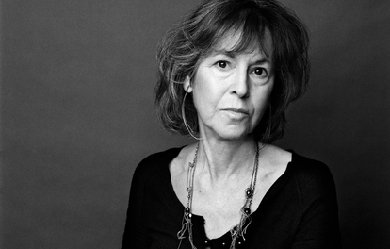
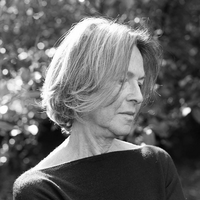
Louise Elisabeth Glück (born April 22, 1943) is an American poet. She was appointed Poet Laureate Consultant in Poetry to the Library of Congress in 2003. Louise was born in New York City of Hungarian Jewish heritage and grew up on Long Island. Her father, Daniel, an immigrant from Hungary, helped invent and market the X-Acto Knife. She graduated in 1961 from George W. Hewlett High School and went on to attend Sarah Lawrence College and later Columbia University; however, she did not graduate from either of them. Glück won the Pulitzer Prize for Poetry in 1993 for her collection The Wild Iris.

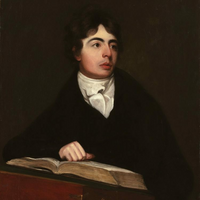
Robert Southey (/ˈsaʊði/ or /ˈsʌði/; August 12, 1774 in Bristol– March 21, 1843 in London) was an English poet of the Romantic school, one of the so-called “Lake Poets”, and Poet Laureate for 30 years from 1813 to his death in 1843. Although his fame has long been eclipsed by that of his contemporaries and friends William Wordsworth and Samuel Taylor Coleridge, Southey’s verse still enjoys some popularity. Southey was also a prolific letter writer, literary scholar, essay writer, historian and biographer. His biographies include the life and works of John Bunyan, John Wesley, William Cowper, Oliver Cromwell and Horatio Nelson. The last has rarely been out of print since its publication in 1813 and was adapted for the screen in the 1926 British film, Nelson. He was also a renowned scholar of Portuguese and Spanish literature and history, translating a number of works from those two languages into English and writing a History of Brazil (part of his planned History of Portugal, which he never completed) and a History of the Peninsular War. Perhaps his most enduring contribution to literary history is the children’s classic The Story of the Three Bears, the original Goldilocks story, first published in Southey’s prose collection The Doctor. He also wrote on political issues which led to a brief, non-sitting, spell as a Tory Member of Parliament. Life Robert Southey was born in Wine Street, Bristol, England, to Robert Southey and Margaret Hill. He was educated at Westminster School, London, (where he was expelled for writing an article in The Flagellant condemning flogging) and Balliol College, Oxford. Southey later said of Oxford, “All I learnt was a little swimming... and a little boating.” Experimenting with a writing partnership with Samuel Taylor Coleridge, most notably in their joint composition of The Fall of Robespierre, Southey published his first collection of poems in 1794. The same year, Southey, Coleridge, Robert Lovell and several others discussed creating an idealistic community ("pantisocracy") on the banks of the Susquehanna River in America: Southey was the first to reject the idea as unworkable, suggesting that they move the intended location to Wales, but when they failed to agree the plan was abandoned. In 1799 Southey and Coleridge were involved with early experiments with nitrous oxide (laughing gas), conducted by the Cornish scientist Humphry Davy. Southey married Edith Fricker at St. Mary Redcliffe, Bristol, on 14 November 1795. She was a sister of Sara Fricker, Coleridge’s wife. The Southeys made their home at Greta Hall, Keswick, in the Lake District, living on his tiny income. Also living at Greta Hall and supported by him were Sara Coleridge and her three children, after Coleridge abandoned them, as well as the widow of poet Robert Lovell and her son. In 1808 Southey met Walter Savage Landor, whose work he admired, and they became close friends. That same year he wrote Letters from England under the pseudonym Don Manuel Alvarez Espriella, an account of a tour supposedly from a foreigner’s viewpoint. It is considered to present the most accurate picture of English ways at the beginning of the 19th century. From 1809, Southey contributed to the Quarterly Review. He had become so well known by 1813 that he was appointed Poet Laureate after Walter Scott refused the post. In 1819, through a mutual friend (John Rickman), Southey met the leading civil engineer Thomas Telford and struck up a strong friendship. From mid-August to 1 October 1819, Southey accompanied Telford on an extensive tour of his engineering projects in the Scottish Highlands, keeping a diary of his observations. This was published in 1929 as Journal of a Tour in Scotland in 1819. He was also a friend of the Dutch poet Willem Bilderdijk, whom he met twice, in 1824 and 1826, at Bilderdijk’s home in Leiden. In 1837 Southey received a letter from Charlotte Brontë, seeking his advice on some of her poems. He wrote back praising her talents, but also discouraging her from writing professionally. He said “Literature cannot be the business of a woman’s life”. Years later, Brontë remarked to a friend that the letter was “kind and admirable; a little stringent, but it did me good.” In 1838, Edith died and Southey remarried, to Caroline Anne Bowles, also a poet, on 4 June 1839. Southey’s mind was giving way when he wrote a last letter to his friend Landor in 1839, but he continued to mention Landor’s name when generally incapable of mentioning any one. He died on 21 March 1843 and was buried in the churchyard of Crosthwaite Church, Keswick, where he had worshipped for forty years. There is a memorial to him inside the church, with an epitaph written by his friend, William Wordsworth. Many of his poems are still read by British schoolchildren, the best-known being The Inchcape Rock, God’s Judgement on a Wicked Bishop, After Blenheim (possibly one of the earliest anti-war poems) and Cataract of Lodore. As a prolific writer and commentator, Southey introduced or popularised a number of words into the English language. The term autobiography, for example, was used by Southey in 1809 in the Quarterly Review in which he predicted an “epidemical rage for autobiography”, which indeed has continued to the present day. Politics Although originally a radical supporter of the French Revolution, Southey followed the trajectory of his fellow Romantic poets Wordsworth and Coleridge towards conservatism. Embraced by the Tory establishment as Poet Laureate, and from 1807 in receipt of a yearly stipend from them, he vigorously supported the Liverpool government. He argued against parliamentary reform ("the railroad to ruin with the Devil for driver"), blamed the Peterloo Massacre on the allegedly revolutionary “rabble” killed and injured by government troops, and opposed Catholic emancipation. In 1817 he privately proposed penal transportation for those guilty of “libel” or “sedition”. He had in mind figures like Thomas Jonathan Wooler and William Hone, whose prosecution he urged. Such writers were guilty, he wrote in the Quarterly Review, of “inflaming the turbulent temper of the manufacturer and disturbing the quiet attachment of the peasant to those institutions under which he and his fathers have dwelt in peace.” Wooler and Hone were acquitted, but the threats caused another target, William Cobbett, to emigrate temporarily to the United States. In some respects, however, Southey was ahead of his time in his views on social reform. For example, he was an early critic of the evils which the new factory system brought to early 19th-century Britain. He was appalled by the conditions of life in towns like Birmingham and Manchester, and especially by the employment of children in factories, and was outspoken in his criticism of these things. He sympathised with the pioneering socialist plans of Robert Owen, advocated that the state promote public works to maintain high employment and called for universal education. Given his departure from radicalism, and his attempts to have former fellow travellers prosecuted, it is unsurprising that less successful contemporaries who kept the faith attacked Southey. They saw him as a selling out for money and respectability. In 1817 Southey was confronted with the surreptitious publication of a radical play, Wat Tyler, which he had written in 1794 at the height of his radical period. This was instigated by his enemies in an attempt to embarrass the Poet Laureate and highlight his apostasy from radical poet to supporter of the Tory establishment. One of his most savage critics was William Hazlitt. In his portrait of Southey, in The Spirit of the Age, he wrote: “He wooed Liberty as a youthful lover, but it was perhaps more as a mistress than a bride; and he has since wedded with an elderly and not very reputable lady, called Legitimacy.” Southey largely ignored his critics but was forced to defend himself when William Smith, a member of Parliament, rose in the House of Commons on 14 March to attack him. In a spirited response Southey wrote an open letter to the MP, in which he explained that he had always aimed at lessening human misery and bettering the condition of all the lower classes and that he had only changed in respect of “the means by which that amelioration was to be effected.” As he put it, “that as he learnt to understand the institutions of his country, he learnt to appreciate them rightly, to love, and to revere, and to defend them.” He was often mocked for what were seen as sycophantic odes to the king, most notably in Byron’s long ironic dedication of Don Juan to Southey. In the poem Southey is dismissed as insolent, narrow and shabby. This was based both on Byron’s disrespect for Southey’s literary talent, and his disdain for what he perceived as Southey’s hypocritical turn to conservative politics later in life. The source of much of the animosity between the two men can be traced back to Byron’s belief that Southey had spread rumours about him and Percy Shelley being in a “League of Incest” during their time on Lake Geneva in 1816, an accusation that Southey strenuously denied. In response, Southey attacked what he called the Satanic School among modern poets in the preface to his poem, A Vision of Judgement, written following the death of George III. While not referring to Byron by name, it was clearly directed at him, and Byron retaliated with The Vision of Judgment, a brilliant parody of Southey’s poem. Without his prior knowledge, the Earl of Radnor, an admirer of his work, had Southey returned as MP for the latter’s pocket borough seat of Downton in Wiltshire at the 1826 general election as an opponent of Catholic emancipation. However Southey refused to sit in the House of Commons, causing a by-election in December that year, pleading he did not have a large enough estate to support him through political life, did not want to take on the hours full attendance required, wanted to continue living in the Lake District, and preferred to defend the Church of England in writing rather than speech. He declared that ‘for me to change my scheme of life and go into Parliament, would be to commit a moral and intellectual suicide’; and his friend John Rickman, a Commons clerk, noted that ‘prudential reasons would forbid his appearing in London’ as a Member. In 1835 he declined the offer of a baronetcy but accepted a life pension of £300 a year from Prime Minister Sir Robert Peel. Southey is buried in the churchyard of Crosthwaite Parish Church in Cumbria. Honours and Memberships Elected a member of the American Antiquarian Society in 1822. Member of the Royal Spanish Academy. List of works * The Fall of Robespierre (1794) * Joan of Arc (1796) * Icelandic Poetry, or The Edda of Sæmund (1797) * Poems (1797–1799) * Letters Written During a Short Residence in Spain and Portugal (1797) * St. Patrick’s Purgatory (1798) * After Blenheim (1798) * The Devil’s Thoughts (1799). Revised ed. pub. in 1827 as “The Devil’s Walk”. * English Eclogues (1799) * The Old Man’s Comforts and How He Gained Them (1799) * Thalaba the Destroyer (1801) * The Inchcape Rock (1802) * Madoc (1805) * Letters from England: By Don Manuel Alvarez Espriella (1807), the observations of a fictitious Spaniard. * Chronicle of the Cid, from the Spanish (1808) * The Curse of Kehama (1810) * History of Brazil (3 vols.) (1810–1819) * The Life of Horatio, Lord Viscount Nelson (1813) * Roderick the Last of the Goths (1814) * Sir Thomas Malory’s Le Morte D’Arthur (1817) * Wat Tyler: A Dramatic Poem (1817) * Cataract of Lodore (1820) * The Life of Wesley; and Rise and Progress of Methodism (2 vols.) (1820) * What Are Little Boys Made Of? (1820) * The Vision of Judgement (1821) * History of the Peninsular War, 1807-1814 (3 vols.) (1823-1832) * Sir Thomas More; or, Colloquies on the Progress and Prospects of Society (1829) * The Works of William Cowper (15 vols.) (ed.) (1833-1837) * Lives of the British Admirals, with an Introductory View of the Naval History of England (5 vols.) (1833-40); republished as “English Seamen” in 1895. * The Doctor (7 vols.) (1834-1847). Includes The Story of the Three Bears (1837). * The Poetical Works of Robert Southey, Collected by Himself (1837) References Wikipedia—https://en.wikipedia.org/wiki/Robert_Southey

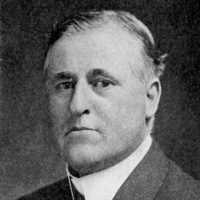
Sir William Watson (2 August 1858– 11 August 1935) was an English poet, popular in his time for the celebratory content, and famous for the controversial political content, of his verse. Initially popularly recognised, he was then neglected because of changing tastes. Poet Watson was born in Burley, in present-day West Yorkshire. He was a prolific poet of the 1890s, and a contributor to The Yellow Book, though without “decadent” associations, and on the traditionalist wing of English poetry. His reputation was established in 1891, with the publication of “Wordsworth’s Grave”. On Alfred Tennyson’s death in 1892, he was a strong candidate to be his eulogist, the commission resulting in his “Lachrymae Musarum”. He suffered a breakdown later in 1892 and was passed over for the position of Poet Laureate in favour of Alfred Austin. Watson regained his standing in 1894 with the publication of Odes and other poems, which included “Vita Nuova”, expressing gratitude for his recovery. He courted controversy later in the decade with a attack on Turkey (The Purple East, 1896) and then later again with anti-Boer War poems. After Austin’s death in 1913, Prime Minister Asquith considered him for the laureateship, despite the fact that he had written a cruel pasquil against his wife Margot Asquith ('She is not old, she is not young/ The woman with the serpent’s tongue’); but because of the contentious nature of his political poems, he was again passed over, this time for Robert Bridges. Perhaps in exchange for writing a panegyric of Lloyd George, or perhaps because of his support of the Great War effort, he was awarded a knighthood in 1917. After World War I Watson was largely forgotten. A number of literary men in 1935 issued a public appeal for a fund to support him in his old age; he died the same year. Family Watson married Adeline Maureen Pring in 1909; they had two daughters. Works * The Prince’s Quest and Other Poems (1880) * Epigrams of Art, Life and Nature (1884) * Wordsworth’s Grave and Other Poems (1890) * Poems (1892) * Lachrymae Musarum (1892) * Lyric Love: An Anthology (1892) * Eloping Angels: A Caprice (1893) * The Poems of William Watson (1893) * Excursions in Criticism: Being Some Prose Recreations Of A Rhymer (1893) * Odes and Other Poems (1894) * The Father of the Forest & Other Poems (1895) * The Purple East: A Series Of Sonnets On England’s Desertion of Armenia (1896) * The Year of Shame (1897) * The Hope of the World and Other Poems (1898) * The Collected Poems of William Watson (1899) * Ode on the Coronation of King Edward VII (1902) * Selected Poems (1903) * For England. Poems Written During Estrangement (1904) * New Poems (1909) * Sable and Purple (1910) * The Heralds of the Dawn: A Play in Eight Scenes (1912) * The Muse in Exile (1913) * Pencraft. A Plea For The Older Ways (1916) * The Man Who Saw: and Other Poems Arising out of the War (1917) * Retrogression and Other Poems (1917) * The Superhuman Antagonists and Other Poems (1919) * "Ireland Unfreed. Poems and Verses written in the early months of 1921" (1921) References Wikipedia—https://en.wikipedia.org/wiki/William_Watson_(poet)
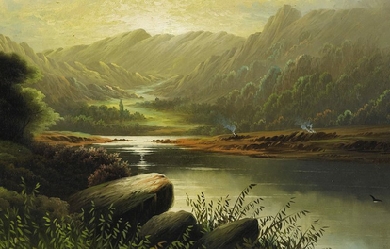
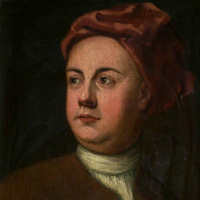
James Thomson (c. 11 September 1700– 27 August 1748) was a Scottish poet and playwright, known for his masterpiece The Seasons and the lyrics of “Rule, Britannia!”. Scotland, 1700–1725 James Thomson was born in Ednam in Roxburghshire around 11 September 1700 and baptised on 15 September. He was the fourth of nine children of Thomas Thomson and Beatrix Thomson (née Trotter). Beatrix Thomson was born in Fogo, Berwickshire and was a distant relation of the house of Hume. Thomas Thomson was the Presbyterian minister of Ednam until eight weeks after Thomson’s birth, when he was admitted as minister of Southdean, where Thomson spent most of his early years. Thomson may have attended the parish school of Southdean before going to the grammar school in Jedburgh in 1712. He failed to distinguish himself there. Shiels, his earliest biographer, writes: 'far from appearing to possess a sprightly genius, [Thomson] was considered by his schoolmaster, and those which directed his education, as being really without a common share of parts’. He was, however, encouraged to write poetry by Robert Riccaltoun (1691–1769), a farmer, poet and Presbyterian minister; and Sir William Bennet (d. 1729), a whig laird who was a patron of Allan Ramsay. While some early poems by Thomson survive, he burned most of them on New Year’s Day each year. Thomson entered the College of Edinburgh in autumn 1715, destined for the Presbyterian ministry. At Edinburgh he studied metaphysics, Logic, Ethics, Greek, Latin and Natural Philosophy. He completed his arts course in 1719 but chose not to graduate, instead entering Divinity Hall to become a minister. In 1716 Thomas Thomson died, with local legend saying that he was killed whilst performing an exorcism. At Edinburgh Thomson became a member of the Grotesque Club, a literary group, and he met his lifelong friend David Mallet. After the successful publication of some of his poems in the ‘’Edinburgh Miscellany’’ Thomson followed Mallet to London in February 1725 in an effort to publish his verse. London, 1725–1727 In London, Thomson became a tutor to the son of Charles Hamilton, Lord Binning, through connections on his mother’s side of the family. Through David Mallet, by 1724 a published poet, Thomson met the great English poets of the day including Richard Savage, Aaron Hill and Alexander Pope. Thomson’s mother died on 12 May 1725, around the time of his writing ‘Winter’, the first poem of ‘‘The Seasons’’. ‘Winter’ was first published in 1726 by John Millian, with a second edition being released (with revisions, additions and a preface) later the same year. By 1727, Thomson was working on Summer, published in February, and was working at Watt’s Academy, a school for young gentlemen and a bastion of Newtonian science. In the same year Millian published a poem by Thomson titled ‘A Poem to the Memory of Sir Isaac Newton’ (who had died in March). Leaving Watt’s academy, Thomson hoped to earn a living through his poetry, helped by his acquiring several wealthy patrons including Thomas Rundle, the countess of Hertford and Charles Talbot, 1st Baron Talbot. Later life, 1728–1748 He wrote Spring in 1728 and finally Autumn in 1730, when the set of four was published together as The Seasons. During this period he also wrote other poems, such as to the Memory of Sir Isaac Newton, and his first play, The Tragedy of Sophonisba (1729). The latter is best known today for its mention in Samuel Johnson’s Lives of the English Poets, where Johnson records that one 'feeble’ line of the poem - “O, Sophonisba, Sophonisba, O!” was parodied by the wags of the theatre as, “O, Jemmy Thomson, Jemmy Thomson, O!”. In 1730, he became tutor to the son of Sir Charles Talbot, then Solicitor-General, and spent nearly two years in the company of the young man on a tour of Europe. On his return Talbot arranged for him to become a secretary in chancery, which gave him financial security until Talbot’s death in 1737. Meanwhile, there appeared his next major work, Liberty (1734). In 1740, he collaborated with Mallet on the masque Alfred which was first performed at Cliveden, the country home of Frederick, Prince of Wales. Thomson’s words for “Rule Britannia”, written as part of that masque and set to music by Thomas Arne, became one of the best-known British patriotic songs - quite apart from the masque which is now virtually forgotten. The Prince gave him a pension of £100 per annum. He had also introduced him to George Lyttelton, who became his friend and patron. In later years, Thomson lived in Richmond upon Thames, and it was there that he wrote his final work The Castle of Indolence, which was published just before his untimely death on 27 August 1748. Johnson writes about Thomson’s death, “by taking cold on the water between London and Kew, he caught a disorder, which, with some careless exasperation, ended in a fever that put end to his life”. He is buried in St. Mary Magdalene church in Richmond. A dispute over the publishing rights to one of his works, The Seasons, gave rise to two important legal decisions (Millar v. Taylor; Donaldson v. Beckett) in the history of copyright. Thomson’s The Seasons was translated into German by Barthold Heinrich Brockes (1745). This translation formed the basis for a work with the same title by Gottfried van Swieten, which became the libretto for Haydn’s oratorio The Seasons. Memorials Thomson is one of the sixteen Scottish poets and writers appearing on the Scott Monument on Princes Street in Edinburgh. He appears on the right side of the east face. Editions Thomson, James & Bloomfield, Robert, The Seasons & Castles of Indolence / The Farmer’s Boy, Rural Tales, Banks of the Wye, &c. &c., (London: Scott, Webster & Geary, 1842). Gilfillan, Rev. George, Thomson’s Poetical Works, with Life, Critical Dissertation, and Explanatory Notes, Library Edition of the British Poets (1854). Thomson, James. The Seasons, by... A New Edition. Adorned with A Set of Engravings, from Original Paintings. Together with an Original Life of the Author, and a Critical Essay on the Seasons. by Robert Heron, (Perth: R. Morison, 1793) Thomson, James. Poems, edited by William Bayne, London: Walter Scott Publishing Co., [1900], (Series: The Canterbury poets). Thomson, James. The Seasons, edited with introduction and commentary by James Sambrook, (Oxford: Clarendon Press, 1981) ISBN 0-19-812713-8. Thomson, James. Liberty, The Castle of Indolence and other poems, edited with introduction and commentary by James Sambrook, (Oxford: Clarendon Press, 1986) ISBN 0-19-812759-6. Bayne, William, Life of James Thomson, Edinburgh: Oliphant, Anderson and Ferrier, 1898, ("Famous Scots Series"). References Wikipedia—https://en.wikipedia.org/wiki/James_Thomson_(poet,_born_1700)

Mary Robinson (née Darby) (27 November 1757? – 26 December 1800) was an English actress, poet, dramatist, novelist, and celebrity figure. During her lifetime she was known as "the English Sappho".[1][2] She earned her nickname "Perdita" for her role as Perdita (heroine of Shakespeare's The Winter's Tale) in 1779. She was the first public mistress of King George IV while he was still Prince of Wales. Biography Early life Robinson was born in Bristol, England to John Darby, a naval captain, and his wife Hester (née Seys). In her memoirs, Robinson gives her birth in 1758 but the year 1757 seems more likely according to recently published research (see appendix to Byrne, 2005). Her father deserted her mother and took on a mistress when Robinson was still a child. The family hoped for a reconciliation, but Captain Darby made it clear that this was not going to happen. Without the support of her husband, Hester Darby supported herself and the five children born of the marriage by starting a school for young girls in Little Chelsea, London, (where Robinson taught by her 14th birthday). However, during one of his brief returns to the family, Captain Darby had the school closed (which he was entitled to do by English law). Robinson, who at one point attended a school run by the social reformer Hannah More, came to the attention of actor David Garrick. Marriage Hester Darby encouraged her daughter to accept the proposal of an articled clerk, Thomas Robinson, who claimed to have an inheritance. Mary was against this idea; however, after being stricken ill, and watching him take care of her and her younger brother, she felt that she owed him, and she did not want to disappoint her mother who was pushing for the engagement. After the early marriage, Robinson discovered that her husband did not have an inheritance. He continued to live an elaborate lifestyle, however, and had multiple affairs that he made no effort to hide. Subsequently, Mary supported their family. After her husband squandered their money, the couple fled to Wales (where Robinson’s only daughter, Mary Elizabeth, was born in November). Her husband was imprisoned for debt in the Fleet Prison where she accompanied him for many months. During this time, Mary Robinson found a patron in Georgiana Cavendish, Duchess of Devonshire, who sponsored the publication of Robinson’s first volume of poems, Captivity. Theatre After her husband obtained his release from prison, Robinson decided to return to the theatre. She launched her acting career and took to the stage, playing Juliet, at Drury Lane Theatre in December 1776. Robinson was best known for her facility with the 'breeches parts’, her performances as Viola in William Shakespeare’sTwelfth Night and Rosalind in As You Like It won her extensive praise. But she gained popularity with playing in Florizel and Perdita, an adaptation of Shakespeare, with the role of Perdita (heroine of The Winter’s Tale) in 1779. It was during this performance that she attracted the notice of the young Prince of Wales, later King George IV of the United Kingdom. He offered her twenty thousand pounds to become his mistress. With her new social prominence, Robinson became a trend-setter in London, introducing a loose, flowing muslin style of gown based upon Grecian statuary that became known as the Perdita. It took Robinson a considerable amount of time to decide to leave her husband for the Prince, as she did not want to be seen by the public as that type of woman. Throughout much of her life she struggled to live in the public eye and also to stay true to the values in which she believed. She eventually gave in to her desires to be with a man whom she thought would treat her better than Mr. Robinson. However, the Prince ended the affair in 1781, refusing to pay the promised sum. “Perdita” Robinson was left to support herself through an annuity promised by the Crown (but rarely paid), in return for some letters written by the Prince, and through her writings. Later life and death Mary Robinson, who now lived separately from her husband, went on to have several love affairs, most notably with Banastre Tarleton, a soldier who had recently distinguished himself fighting in the American War of Independence. Their relationship survived for the next 15 years, through Tarleton’s rise in military rank and his concomitant political successes, through Mary’s own various illnesses, through financial vicissitudes and the efforts of Tarleton’s own family to end the relationship. They had no children, although Robinson had a miscarriage. However, in the end, Tarleton married Susan Bertie, an heiress and an illegitimate daughter of the young 4th Duke of Ancaster, and niece of his sisters Lady Willoughby de Eresby and Lady Cholmondeley. In 1783, Robinson suffered a mysterious illness that left her partially paralysed. Biographer Paula Byrne speculates that a streptococcal infection resulting from a miscarriage led to a severe rheumatic fever that left her disabled for the rest of her life. From the late 1780s, Robinson became distinguished for her poetry and was called “the English Sappho”. In addition to poems, she wrote eight novels, three plays, feminist treatises, and an autobiographical manuscript that was incomplete at the time of her death. Like her contemporary Mary Wollstonecraft, she championed the rights of women and was an ardent supporter of the French Revolution. She died in late 1800 in poverty at the age of 43, having survived several years of ill health, and was survived by her daughter, who was also a published novelist. Literature After years of scholarly neglect, Robinson’s literary afterlife continues apace. While most of the early literature written about Robinson focused on her sexuality, emphasizing her affairs and fashions, she began to receive the attention of feminists and literary scholars in the 1990s. In addition to regaining literary and cultural notability, she has re-attained a degree of celebrity in recent years when several biographies of her appeared, including one by Paula Byrne entitled Perdita: The Literary, Theatrical, and Scandalous Life of Mary Robinson that became a top-ten best-seller after being selected for the Richard & Judy Book Club. Poetry Poems (1775) Captivity, A Poem and Celadon and Lydia, a Tale (1777) Poems (Vol. 1, 1791 / Vol. 2, 1793) London’s Summer Morning (1795) Sappho and Phaon: In a Series of Legitimate Sonnets (1796) Lyrical Tales (1800) Novels Vancenza; or, The Dangers of Credulity (1792) The Widow; or, A Picture of Modern Times (1794) Angelina; A Novel (1796) Hubert de Sevrac, A Romance, of the Eighteenth Century (1796) Walsingham: or, The Pupil of Nature, A Domestic Story (1797) The False Friend; A Domestic Story (1799) The Natural Daughter. With Portraits of the Leadenhead Family. A Novel (1799) Jasper, A Fragment [published posthumously in Memoirs of the Late Mrs. Robinson, Written by Herself (1801)] Dramas The Lucky Escape, A Comic Opera (Drury Lane, 1778) Nobody: A Comedy in Two Acts (Drury Lane, 1794) The Sicilian Lover: A Tragedy in Five Acts (never performed) Socio-political texts Impartial Reflections of the Present Situation of the Queen of France (1791) A Letter to the Women of England, on the Injustice of Mental Subordination (1799) Memoir Robinson, Mary [and Maria Elizabeth Robinson]. Memoirs of the Late Mrs. Robinson, Written by Herself. With Some Posthumous Pieces. 4 vols. London, 1801. Biographies of Robinson Byrne, Paula. Perdita: The Literary, Theatrical, and Scandalous Life of Mary Robinson. New York: Random House, 2004. Chisholm, Hugh, ed. (1911). “Robinson, Mary”. Encyclopædia Britannica 23 (11th ed.). Cambridge University Press. Davenport, Hester. The Prince’s Mistress: Perdita, a Life of Mary Robinson. Stroud: Sutton Publishing, 2004. Gristwood, Sarah. Perdita: Royal Mistress, Writer, Romantic. London: Bantam, 2005. Memoirs of Mary Robinson 1895. Knight, John Joseph (1897). “Robinson, Mary”. In Lee, Sidney. Dictionary of National Biography 49. London: Smith, Elder & Co. Ledoux, Ellen Malenas. “Florizel and Perdita Affair, 1779–80.” BRANCH: Britain, Representation and Nineteenth-Century History. Ed. Dino Franco Felluga. Extension of Romanticism and Victorianism on the Net. Web. 2 June 2013. Robinson, Mary [and Maria Elizabeth Robinson]. Memoirs of the Late Mrs. Robinson, Written by Herself. With Some Posthumous Pieces. 4 vols. London, 1801. Levy, Martin J. "Robinson, Mary [Perdita] (1756/1758?–1800)". Oxford Dictionary of National Biography (online ed.). Oxford University Press. doi:10.1093/ref:odnb/23857. (Subscription or UK public library membership required.) Resources on Robinson and her literature Brewer, William D., ed. The Works of Mary Robinson. 8 vols. Pickering & Chatto, 2009–2010. Gamer, Michael, and Terry F. Robinson. “Mary Robinson and the Dramatic Art of the Comeback.” Studies in Romanticism 48.2 (Summer 2009): 219–256. Pascoe, Judith. Mary Robinson: Selected Poems. Peterborough, ON: Broadview Press, 1999. Robinson, Daniel. The Poetry of Mary Robinson: Form and Fame. New York: Palgrave Macmillan, 2011. Robinson, Terry F. “Introduction.” Nobody. By Mary Robinson. Romantic Circles. Web. March 2013. Fictional works about Robinson Elyot, Amanda. All For Love: The Scandalous Life and Times of Royal Mistress Mary Robinson. A Novel. 2008. Lightfoot, Freda. Lady of Passion: The Story of Mary Robinson. 2013. Plaidy, Jean. Perdita’s Prince. 1969.
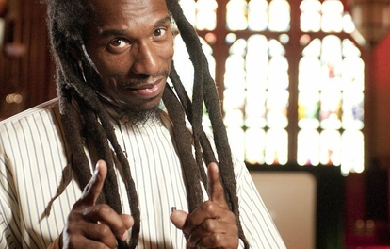
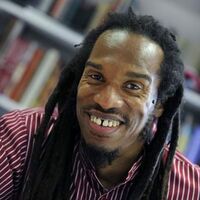
Benjamin Obadiah Iqbal Zephaniah (born 15 April 1958, Birmingham, England) is an English writer and dub poet. He is a well-known figure in contemporary English literature, and was included in The Times list of Britain's top 50 post-war writers in 2008. Zephaniah was born and raised in the Handsworth district of Birmingham, which he called the “Jamaican capital of Europe”. He is the son of a Barbadian postman and a Jamaican nurse. A dyslexic, he attended an approved school but left aged 13 unable to read or write. He writes that his poetry is strongly influenced by the music and poetry of Jamaica and what he calls “street politics”.
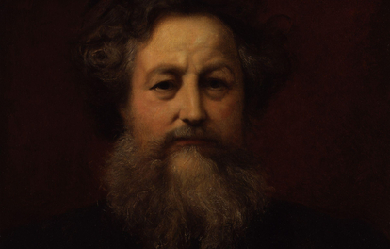
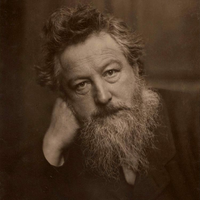
William Morris (24 March 1834– 3 October 1896) was an English textile designer, poet, novelist, translator, and socialist activist. Associated with the British Arts and Crafts Movement, he was a major contributor to the revival of traditional British textile arts and methods of production. His literary contributions helped to establish the modern fantasy genre, while he played a significant role in propagating the early socialist movement in Britain.
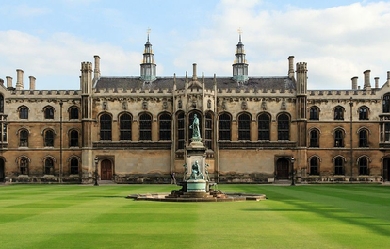
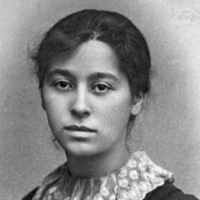
Amy Judith Levy (10 November 1861– 10 September 1889) was a British essayist, poet, and novelist best remembered for her literary gifts; her experience as the first Jewish woman at Cambridge University and as a pioneering woman student at Newnham College, Cambridge; her feminist positions; her friendships with others living what came later to be called a “new woman” life, some of whom were lesbians; and her relationships with both women and men in literary and politically activist circles in London during the 1880s. Biography Levy was born in Clapham, an affluent district of London, on November 10, 1861, to Lewis and Isobel Levy. She was the second of seven children born into a Jewish family with a “casual attitude toward religious observance” who sometimes attended a Reform synagogue in Upper Berkeley Street. As an adult, Levy continued to identify herself as Jewish and wrote for The Jewish Chronicle. Levy showed interest in literature from an early age. At 13, she wrote a criticism of Elizabeth Barrett Browning’s feminist work Aurora Leigh; at 14, Levy’s first poem, “Ida Grey: A Story of Woman’s Sacrifice”, was published in the journal Pelican. Her family was supportive of women’s education and encouraged Amy’s literary interests; in 1876, she was sent to Brighton and Hove High School and later studied at Newnham College, Cambridge. Levy was the first Jewish student at Newnham when she arrived in 1879 but left before her final year without taking her exams. Her circle of friends included Clementina Black, Dollie Radford, Eleanor Marx (daughter of Karl Marx), and Olive Schreiner. While travelling in Florence in 1886, Levy met Vernon Lee, a fiction writer and literary theorist six years her senior, and fell in love with her. Both women would go on to write works with themes of sapphic love. Lee inspired Levy’s poem “To Vernon Lee.” Literary career The Romance of a Shop (1888), Levy’s first novel, is regarded as an early “New Woman” novel and depicts four sisters who experience the difficulties and opportunities afforded to women running a business in 1880s London, Levy wrote her second novel, Reuben Sachs (1888), to fill the literary need for “serious treatment... of the complex problem of Jewish life and Jewish character”, which she identified and discussed in her 1886 article “The Jew in Fiction.” Levy wrote stories, essays, and poems for popular or literary periodicals; the stories “Cohen of Trinity” and “Wise in Their Generation”, both published in Oscar Wilde’s magazine The Woman’s World, are among her most notable. In 1886, Levy began writing a series of essays on Jewish culture and literature for The Jewish Chronicle, including The Ghetto at Florence, The Jew in Fiction, Jewish Humour, and Jewish Children. Levy’s works of poetry, including the daring A Ballad of Religion and Marriage, reveal her feminist concerns. Xantippe and Other Verses (1881) includes “Xantippe”, a poem in the voice of Socrates’s wife; the volume A Minor Poet and Other Verse (1884) includes more dramatic monologues as well as lyric poems. Her final book of poems, A London Plane-Tree (1889), contains lyrics that are among the first to show the influence of French symbolism. Suicide Levy suffered from episodes of major depression from an early age. In her later years, her depression worsened in connection to her distress surrounding her romantic relationships and her awareness of her growing deafness. Two months away from her 28th birthday, she committed suicide at the residence of her parents... [at] Endsleigh Gardens by inhaling carbon monoxide. Oscar Wilde wrote an obituary for her in Women’s World in which he praised her gifts.
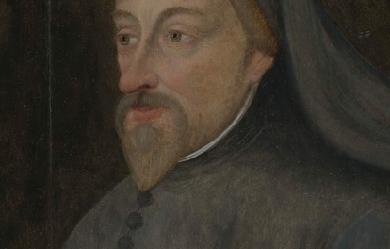

Geoffrey Chaucer (c. 1343 – 25 October 1400), known as the Father of English literature, is widely considered the greatest English poet of the Middle Ages and was the first poet to have been buried in Poet's Corner of Westminster Abbey. While he achieved fame during his lifetime as an author, philosopher, alchemist and astronomer, composing a scientific treatise on the astrolabe for his ten year-old son Lewis, Chaucer also maintained an active career in the civil service as a bureaucrat, courtier and diplomat. Among his many works, which include The Book of the Duchess, the House of Fame, the Legend of Good Women and Troilus and Criseyde, he is best known today for The Canterbury Tales. Chaucer is a crucial figure in developing the legitimacy of the vernacular, Middle English, at a time when the dominant literary languages in England were French and Latin. Geoffrey Chaucer was born in London sometime around 1343, though the precise date and location of his birth remain unknown. His father and grandfather were both London vintners; several previous generations had been merchants in Ipswich. (His family name derives from the French chausseur, meaning "shoemaker".)[1] In 1324 John Chaucer, Geoffrey's father, was kidnapped by an aunt in the hope of marrying the twelve-year-old boy to her daughter in an attempt to keep property in Ipswich. The aunt was imprisoned and the £250 fine levied suggests that the family was financially secure—bourgeois, if not elite.[2] John Chaucer married Agnes Copton, who, in 1349, inherited properties including 24 shops in London from her uncle, Hamo de Copton, who is described in a will dated 3 April 1354 and listed in the City Hustings Roll as "moneyer"; he was said to be moneyer at the Tower of London. In the City Hustings Roll 110, 5, Ric II, dated June 1380, Geoffrey Chaucer refers to himself as me Galfridum Chaucer, filium Johannis Chaucer, Vinetarii, Londonie' . While records concerning the lives of his contemporary poets, William Langland and the Pearl Poet are practically non-existent, since Chaucer was a public servant, his official life is very well documented, with nearly five hundred written items testifying to his career. The first of the "Chaucer Life Records" appears in 1357, in the household accounts of Elizabeth de Burgh, the Countess of Ulster, when he became the noblewoman's page through his father's connections.[3] She was married to Lionel, Duke of Clarence, the second surviving son of the king, Edward III, and the position brought the teenage Chaucer into the close court circle, where he was to remain for the rest of his life. He also worked as a courtier, a diplomat, and a civil servant, as well as working for the king, collecting and inventorying scrap metal. In 1359, in the early stages of the Hundred Years' War, Edward III invaded France and Chaucer travelled with Lionel of Antwerp, 1st Duke of Clarence, Elizabeth's husband, as part of the English army. In 1360, he was captured during the siege of Rheims. Edward paid £16 for his ransom, a considerable sum, and Chaucer was released. After this, Chaucer's life is uncertain, but he seems to have travelled in France, Spain, and Flanders, possibly as a messenger and perhaps even going on a pilgrimage to Santiago de Compostela. Around 1366, Chaucer married Philippa (de) Roet. She was a lady-in-waiting to Edward III's queen, Philippa of Hainault, and a sister of Katherine Swynford, who later (ca. 1396) became the third wife of John of Gaunt. It is uncertain how many children Chaucer and Philippa had, but three or four are most commonly cited. His son, Thomas Chaucer, had an illustrious career, as chief butler to four kings, envoy to France, and Speaker of the House of Commons. Thomas's daughter, Alice, married the Duke of Suffolk. Thomas's great-grandson (Geoffrey's great-great-grandson), John de la Pole, Earl of Lincoln, was the heir to the throne designated by Richard III before he was deposed. Geoffrey's other children probably included Elizabeth Chaucy, a nun at Barking Abbey. Agnes, an attendant at Henry IV's coronation; and another son, Lewis Chaucer. Chaucer’s “Treatise on the Astrolabe” was written for Lewis. Chaucer probably studied law in the Inner Temple (an Inn of Court) at this time. He became a member of the royal court of Edward III as a varlet de chambre, yeoman, or esquire on 20 June 1367, a position which could entail a wide variety of tasks. His wife also received a pension for court employment. He travelled abroad many times, at least some of them in his role as a valet. In 1368, he may have attended the wedding of Lionel of Antwerp to Violante Visconti, daughter of Galeazzo II Visconti, in Milan. Two other literary stars of the era were in attendance: Jean Froissart and Petrarch. Around this time, Chaucer is believed to have written The Book of the Duchess in honour of Blanche of Lancaster, the late wife of John of Gaunt, who died in 1369. Chaucer travelled to Picardy the next year as part of a military expedition; in 1373 he visited Genoa and Florence. Numerous scholars such as Skeat, Boitani, and Rowland suggested that, on this Italian trip, he came into contact with Petrarch or Boccaccio. They introduced him to medieval Italian poetry, the forms and stories of which he would use later. The purposes of a voyage in 1377 are mysterious, as details within the historical record conflict. Later documents suggest it was a mission, along with Jean Froissart, to arrange a marriage between the future King Richard II and a French princess, thereby ending the Hundred Years War. If this was the purpose of their trip, they seem to have been unsuccessful, as no wedding occurred. In 1378, Richard II sent Chaucer as an envoy (secret dispatch) to the Visconti and to Sir John Hawkwood, English condottiere (mercenary leader) in Milan. It has been speculated that it was Hawkwood on whom Chaucer based his character the Knight in the Canterbury Tales, for a description matches that of a fourteenth-century condottiere. A possible indication that his career as a writer was appreciated came when Edward III granted Chaucer "a gallon of wine daily for the rest of his life" for some unspecified task. This was an unusual grant, but given on a day of celebration, St George's Day, 1374, when artistic endeavours were traditionally rewarded, it is assumed to have been another early poetic work. It is not known which, if any, of Chaucer's extant works prompted the reward, but the suggestion of him as poet to a king places him as a precursor to later poets laureate. Chaucer continued to collect the liquid stipend until Richard II came to power, after which it was converted to a monetary grant on 18 April 1378. Chaucer obtained the very substantial job of Comptroller of the Customs for the port of London, which he began on 8 June 1374.[10] He must have been suited for the role as he continued in it for twelve years, a long time in such a post at that time. His life goes undocumented for much of the next ten years, but it is believed that he wrote (or began) most of his famous works during this period. He was mentioned in law papers of 4 May 1380, involved in the raptus of Cecilia Chaumpaigne. What raptus means is unclear, but the incident seems to have been resolved quickly and did not leave a stain on Chaucer's reputation. It is not known if Chaucer was in the city of London at the time of the Peasants' Revolt, but if he was, he would have seen its leaders pass almost directly under his apartment window at Aldgate. While still working as comptroller, Chaucer appears to have moved to Kent, being appointed as one of the commissioners of peace for Kent, at a time when French invasion was a possibility. He is thought to have started work on The Canterbury Tales in the early 1380s. He also became a Member of Parliament for Kent in 1386. There is no further reference after this date to Philippa, Chaucer's wife, and she is presumed to have died in 1387. He survived the political upheavals caused by the Lords Appellants, despite the fact that Chaucer knew some of the men executed over the affair quite well. On 12 July 1389, Chaucer was appointed the clerk of the king's works, a sort of foreman organising most of the king's building projects.[12] No major works were begun during his tenure, but he did conduct repairs on Westminster Palace, St. George's Chapel, Windsor, continue building the wharf at the Tower of London, and build the stands for a tournament held in 1390. It may have been a difficult job, but it paid well: two shillings a day, more than three times his salary as a comptroller. Chaucer was also appointed keeper of the lodge at the King’s park in Feckenham, which was a largely honorary appointment.[13] In September 1390, records say that he was robbed, and possibly injured, while conducting the business, and it was shortly after, on 17 June 1391, that he stopped working in this capacity. Almost immediately, on 22 June, he began as Deputy Forester in the royal forest of North Petherton, Somerset. This was no sinecure, with maintenance an important part of the job, although there were many opportunities to derive profit. He was granted an annual pension of twenty pounds by Richard II in 1394.[14] It is believed that Chaucer stopped work on the Canterbury Tales sometime towards the end of this decade. Not long after the overthrow of his patron, Richard II, in 1399, Chaucer's name fades from the historical record. The last few records of his life show his pension renewed by the new king, and his taking of a lease on a residence within the close of Westminster Abbey on 24 December 1399.[15] Although Henry IV renewed the grants assigned to Chaucer by Richard, Chaucer's own The Complaint of Chaucer to his Purse hints that the grants might not have been paid. The last mention of Chaucer is on 5 June 1400, when some monies owed to him were paid. He is believed to have died of unknown causes on 25 October 1400, but there is no firm evidence for this date, as it comes from the engraving on his tomb, erected more than one hundred years after his death. There is some speculation—most recently in Terry Jones' book Who Murdered Chaucer? : A Medieval Mystery—that he was murdered by enemies of Richard II or even on the orders of his successor Henry IV, but the case is entirely circumstantial. Chaucer was buried in Westminster Abbey in London, as was his right owing to his status as a tenant of the Abbey's close. In 1556, his remains were transferred to a more ornate tomb, making Chaucer the first writer interred in the area now known as Poets' Corner. Work Chaucer's first major work, The Book of the Duchess, was an elegy for Blanche of Lancaster (who died in 1369). It is possible that this work was commissioned by her husband John of Gaunt, as he granted Chaucer a £10 annuity on 13 June 1374. This would seem to place the writing of The Book of the Duchess between the years 1369 and 1374. Two other early works by Chaucer were Anelida and Arcite and The House of Fame. Chaucer wrote many of his major works in a prolific period when he held the job of customs comptroller for London (1374 to 1386). His Parlement of Foules, The Legend of Good Women and Troilus and Criseyde all date from this time. Also it is believed that he started work on The Canterbury Tales in the early 1380s. Chaucer is best known as the writer of The Canterbury Tales, which is a collection of stories told by fictional pilgrims on the road to the cathedral at Canterbury; these tales would help to shape English literature. The Canterbury Tales contrasts with other literature of the period in the naturalism of its narrative, the variety of stories the pilgrims tell and the varied characters who are engaged in the pilgrimage. Many of the stories narrated by the pilgrims seem to fit their individual characters and social standing, although some of the stories seem ill-fitting to their narrators, perhaps as a result of the incomplete state of the work. Chaucer drew on real life for his cast of pilgrims: the innkeeper shares the name of a contemporary keeper of an inn in Southwark, and real-life identities for the Wife of Bath, the Merchant, the Man of Law and the Student have been suggested. The many jobs that Chaucer held in medieval society—page, soldier, messenger, valet, bureaucrat, foreman and administrator—probably exposed him to many of the types of people he depicted in the Tales. He was able to shape their speech and satirise their manners in what was to become popular literature among people of the same types. Chaucer's works are sometimes grouped into first a French period, then an Italian period and finally an English period, with Chaucer being influenced by those countries' literatures in turn. Certainly Troilus and Criseyde is a middle period work with its reliance on the forms of Italian poetry, little known in England at the time, but to which Chaucer was probably exposed during his frequent trips abroad on court business. In addition, its use of a classical subject and its elaborate, courtly language sets it apart as one of his most complete and well-formed works. In Troilus and Criseyde Chaucer draws heavily on his source, Boccaccio, and on the late Latin philosopher Boethius. However, it is The Canterbury Tales, wherein he focuses on English subjects, with bawdy jokes and respected figures often being undercut with humour, that has cemented his reputation. Chaucer also translated such important works as Boethius' Consolation of Philosophy and The Romance of the Rose by Guillaume de Lorris (extended by Jean de Meun). However, while many scholars maintain that Chaucer did indeed translate part of the text of Roman de la Rose as The Romaunt of the Rose, others claim that this has been effectively disproved. Many of his other works were very loose translations of, or simply based on, works from continental Europe. It is in this role that Chaucer receives some of his earliest critical praise. Eustache Deschamps wrote a ballade on the great translator and called himself a "nettle in Chaucer's garden of poetry". In 1385 Thomas Usk made glowing mention of Chaucer, and John Gower, Chaucer's main poetic rival of the time, also lauded him. This reference was later edited out of Gower's Confessio Amantis and it has been suggested by some that this was because of ill feeling between them, but it is likely due simply to stylistic concerns. One other significant work of Chaucer's is his Treatise on the Astrolabe, possibly for his own son, that describes the form and use of that instrument in detail and is sometimes cited as the first example of technical writing in the English language. Although much of the text may have come from other sources, the treatise indicates that Chaucer was versed in science in addition to his literary talents. Another scientific work discovered in 1952, Equatorie of the Planetis, has similar language and handwriting compared to some considered to be Chaucer's and it continues many of the ideas from the Astrolabe. Furthermore, it contains an example of early European encryption.[16] The attribution of this work to Chaucer is still uncertain. Selected Works The Canterbury Tales Troilus and Criseyde Treatise on the Astrolabe The Legend of Good Women Parlement of Foules Anelida and Arcite The House of Fame The Book of the Duchess Roman de la Rose Translation of Boethius' Consolation of Philosophy (as Boece) References Wikipedia – http://en.wikipedia.org/wiki/Geoffrey_Chaucer
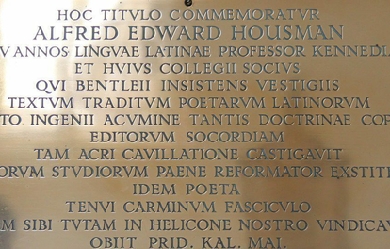
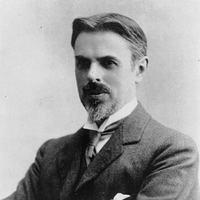
Alfred Edward Housman was born in Fockbury, Worcestershire, England, on March 26, 1859, the eldest of seven children. A year after his birth, Housman’s family moved to nearby Bromsgrove, where the poet grew up and had his early education. In 1877, he attended St. John’s College, Oxford and received first class honours in classical moderations. Housman became distracted, however, when he fell in love with his heterosexual roommate Moses Jackson. He unexpectedly failed his final exams, but managed to pass the final year and later took a position as clerk in the Patent Office in London for ten years. During this time he studied Greek and Roman classics intensively, and in 1892 was appointed professor of Latin at University College, London. In 1911 he became professor of Latin at Trinity College, Cambridge, a post he held until his death. As a classicist, Housman gained renown for his editions of the Roman poets Juvenal, Lucan, and Manilius, as well as his meticulous and intelligent commentaries and his disdain for the unscholarly. Housman only published two volumes of poetry during his life: A Shropshire Lad (1896) and Last Poems (1922). The majority of the poems in A Shropshire Lad, his cycle of 63 poems, were written after the death of Adalbert Jackson, Housman’s friend and companion, in 1892. These poems center around themes of pastoral beauty, unrequited love, fleeting youth, grief, death, and the patriotism of the common soldier. After the manuscript had been turned down by several publishers, Housman decided to publish it at his own expense, much to the surprise of his colleagues and students. While A Shropshire Lad was slow to gain in popularity, the advent of war, first in the Boer War and then in World War I, gave the book widespread appeal due to its nostalgic depiction of brave English soldiers. Several composers created musical settings for Housman’s work, deepening his popularity. Housman continued to focus on his teaching, but in the early 1920s, when his old friend Moses Jackson was dying, Housman chose to assemble his best unpublished poems so that Jackson might read them. These later poems, most of them written before 1910, exhibit a range of subject and form much greater than the talents displayed in A Shropshire Lad. When Last Poems was published in 1922, it was an immediate success. A third volume, More Poems, was released posthumously in 1936 by his brother, Laurence, as was an edition of Housman’s Complete Poems (1939). Despite acclaim as a scholar and a poet in his lifetime, Housman lived as a recluse, rejecting honors and avoiding the public eye. He died on April 30, 1936, in Cambridge. References Poets.org—https://www.poets.org/poetsorg/poet/e-housman
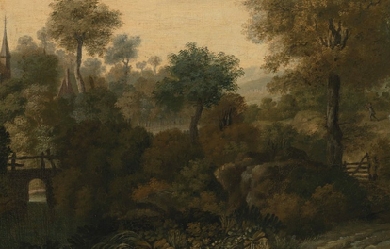

William Lisle Bowles (24 September 1762– 7 April 1850) was an English priest, poet and critic. Life and career Bowles was born at King’s Sutton, Northamptonshire, where his father was vicar. At the age of 14 he entered Winchester College, where the headmaster at the time was Dr Joseph Warton. In 1781 Bowles left as captain of the school, and went on to Trinity College, Oxford, where he had won a scholarship. Two years later he won the Chancellor’s prize for Latin verse. Bowles came from a line of Church of England clergymen. His great-grandfather Matthew Bowles (1652–1742), grandfather Dr Thomas Bowles (1696–1773) and father William Thomas Bowles (1728–86) had all been parish priests. After taking his degree at Oxford, Bowles followed his forebears into the Church of England, and in 1792, after serving as curate in Donhead St Andrew, was appointed vicar of Chicklade in Wiltshire. In 1797 he received the vicarage of Dumbleton in Gloucestershire, and in 1804 became vicar of Bremhill in Wiltshire, where he wrote the poem seen on Maud Heath’s statue. In the same year his bishop, John Douglas, collated him to a prebendal stall in Salisbury Cathedral. In 1818 he was made chaplain to the Prince Regent, and in 1828 he was elected residentiary canon of Salisbury. Works * In 1789 he published, in a very small quarto volume, Fourteen Sonnets, which were received with extraordinary favour, not only by the general public, but by such men as Samuel Taylor Coleridge and Wordsworth. * The Sonnets even in form were a revival, a return to an older and purer poetic style, and by their grace of expression, melodious versification, tender tone of feeling and vivid appreciation of the life and beauty of nature, stood out in strong contrast to the elaborated commonplaces which at that time formed the bulk of English poetry. Bowles said thereof Poetic trifles from solitary rambles whilst chewing the cud of sweet and bitter fancy, written from memory, confined to fourteen lines, this seemed best adapted to the unity of sentiment, the verse flowed in unpremeditated harmony as my ear directed but are far from being mere elegiac couplets. * The longer poems published by Bowles are not of a very high standard, though all are distinguished by purity of imagination, cultured and graceful diction, and great tenderness of feeling. The most extensive were The Spirit of Discovery (1804), which was mercilessly ridiculed by Lord Byron; The Missionary (1813); The Grave of the Last Saxon (1822); and St John in Patmos (1833). Bowles is perhaps more celebrated as a critic than as a poet.In 1806 he published an edition of Alexander Pope’s works with notes and an essay, in which he laid down certain canons as to poetic imagery which, subject to some modification, were later accepted, but which were received at the time with strong opposition by admirers of Pope and his style. The controversy brought into sharp contrast the opposing views of poetry, which may be roughly described as the natural and the artificial. * Bowles was an amiable, absent-minded, and rather eccentric man. His poems are characterised by refinement of feeling, tenderness, and pensive thought, but are deficient in power and passion. Bowles maintained that images drawn from nature are poetically finer than those drawn from art; and that in the highest kinds of poetry the themes or passions handled should be of the general or elemental kind, and not the transient manners of any society. These positions were attacked by Byron, Thomas Campbell, William Roscoe and others, while for a time Bowles was almost solitary. William Hazlitt and the Blackwood critics came to his assistance, and on the whole Bowles had reason to congratulate himself on having established certain principles which might serve as the basis of a true method of poetical criticism, and of having inaugurated, both by precept and by example, a new era in English poetry. Among other prose works from his prolific pen was a Life of Bishop Ken (two volumes, 1830–1831). Other works include Coombe Ellen and St. Michael’s Mount (1798), The Battle of the Nile (1799), and The Sorrows of Switzerland (1801). * Bowles also enjoyed considerable reputation as an antiquary, his principal work in that department being Hermes Britannicus (1828). His Poetical Works were collected in 1855 as part of the Library Edition of the British Poets, with a memoir by George Gilfillan. Reception * Bowles’ work was important to the young Samuel Taylor Coleridge: * Bowles was the cause in the 1820s of the Alexander Pope controversy into which George Gordon, Lord Byron was drawn. References Wikipedia—https://en.wikipedia.org/wiki/William_Lisle_Bowles
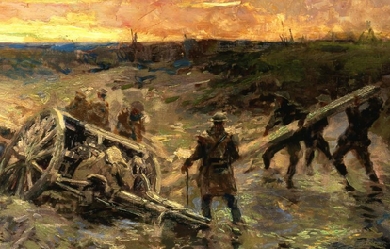
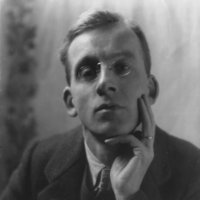
Wilfrid Wilson Gibson (2 October 1878– 26 May 1962) was a British Georgian poet, associated with World War I but also the author of much later work. Early work Gibson was born in Hexham, Northumberland, and left the north for London in 1914 after his mother died. He had been publishing poems in magazines since 1895, and his first collections in book form were published by Elkin Mathews in 1902. His collections of verse plays and dramatic poems The Stonefolds and On The Threshold were published by the Samurai Press (of Cranleigh) in 1907, followed next year by the book of poems, The Web of Life. Despite his residence in London, and later in Gloucestershire, many of Gibson’s poems both then and later, have Northumberland settings: Hexham’s Market Cross; Hareshaw; and The Kielder Stone. Others deal with poverty and passion amid wild Northumbrian landscapes. Still others are devoted to fishermen, industrial workers and miners, often alluding to local ballads and the rich folk-song heritage of the North East. It was in London that he met both Edward Marsh and Rupert Brooke, becoming a close friend and later Brooke’s literary executor (with Lascelles Abercrombie and Walter de la Mare). This was at the period when the first Georgian Poetry anthology was being hatched. Gibson was one of the insiders. During the early part of his writing life, Wilfrid Wilson Gibson wrote poems that featured the “macabre.” One such poem is Flannan Isle, based on a real life mystery. Gibson was one of the founders of the so-called ”Dymock poets”, a community of writers who settled briefly, before the outbreak of the Great War, in the village of Dymock, in north Gloucestershire. Reputation His reputation was eclipsed somewhat by the Ezra Pound-T. S. Eliot school of Modernist poetry; his work remained popular. Further reading Dominic Hibberd, Wilfrid Gibson and Harold Monro, the Pioneers (Cecil Woolf, 2006) References Wikipedia—https://en.wikipedia.org/wiki/Wilfrid_Wilson_Gibson
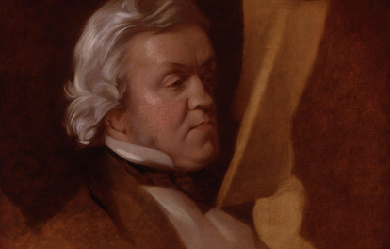
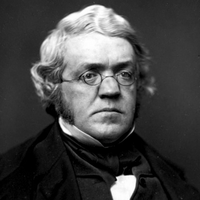
William Makepeace Thackeray (18 July 1811– 24 December 1863) was an English novelist of the 19th century. He is famous for his satirical works, particularly Vanity Fair, a panoramic portrait of English society. He began as a satirist and parodist, writing works that displayed a sneaking fondness for roguish upstarts such as Becky Sharp in Vanity Fair, and the title characters of The Luck of Barry Lyndon and Catherine. In his earliest works, written under such pseudonyms as Charles James Yellowplush, Michael Angelo Titmarsh and George Savage Fitz-Boodle, he tended towards savagery in his attacks on high society, military prowess, the institution of marriage and hypocrisy.


